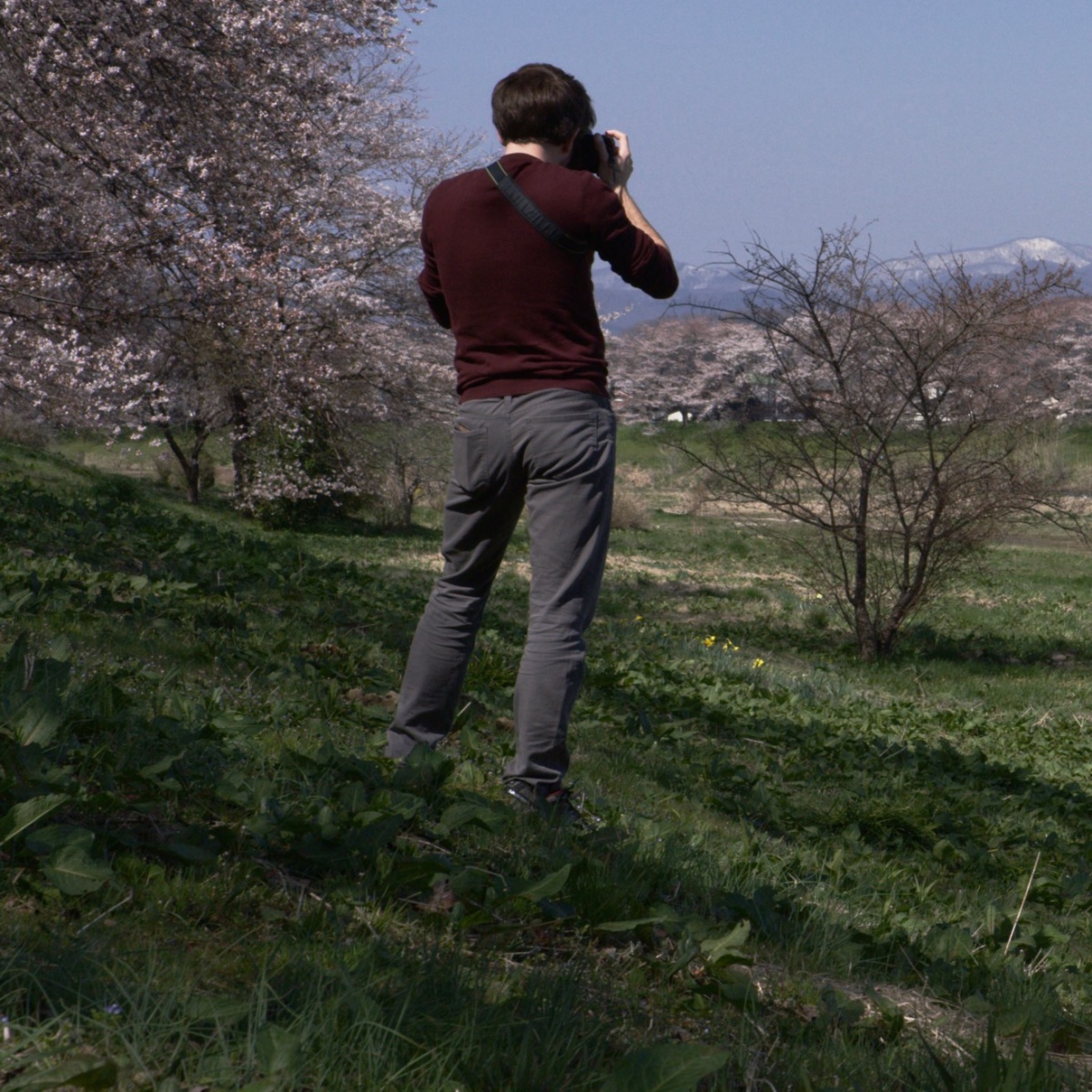Henro: A Mystical Pilgrimage Through Shikoku
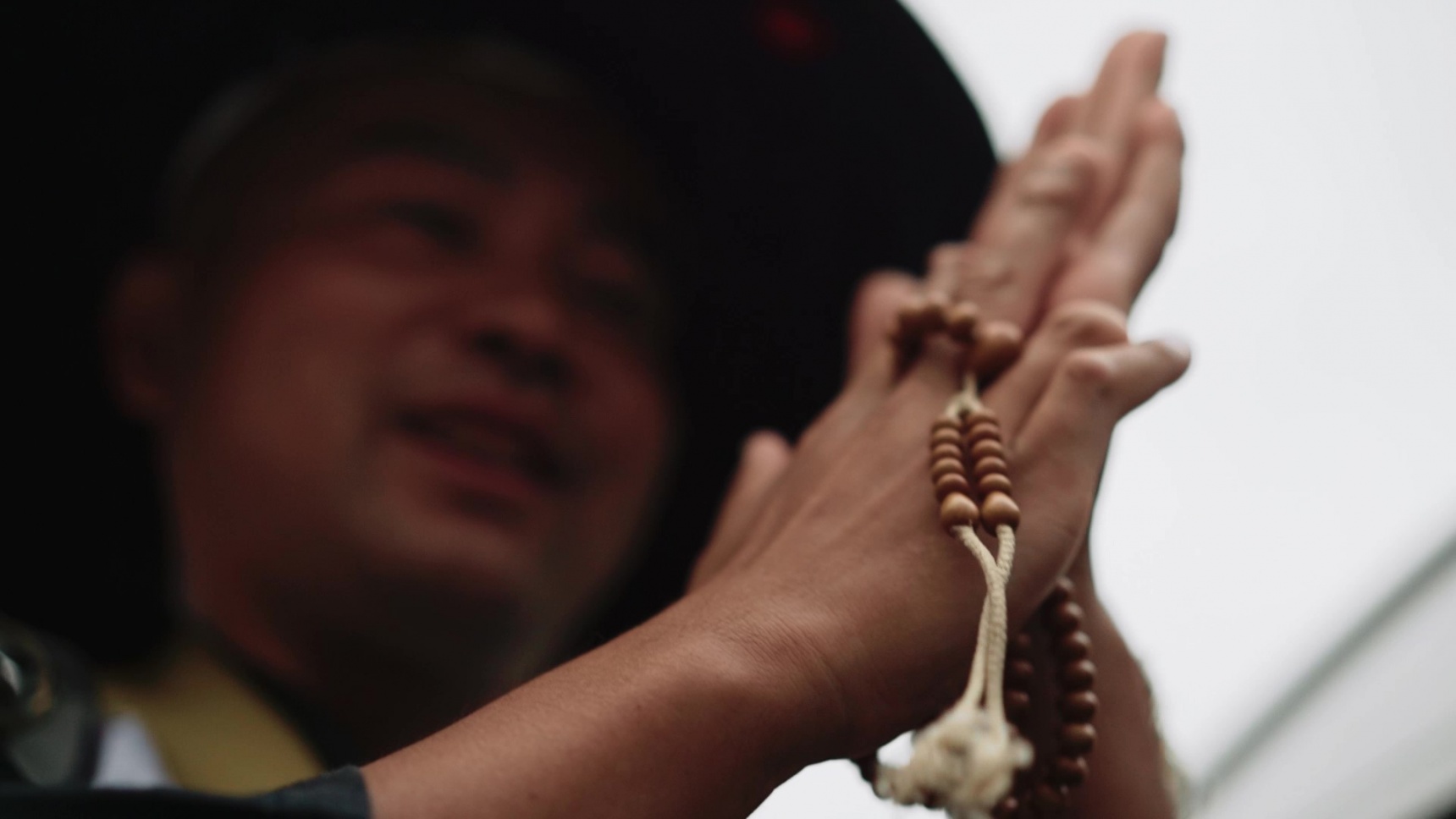
The small island of Shikoku is home to an ancient, sacred pilgrimage known as the Henro. This one-of-a-kind spiritual journey takes pilgrims through 88 temples scattered throughout Shikoku's four prefectures, and is a great way to dive deep into an often overlooked part of Japan that is chock-full of reasons to visit!
By Nicholas RichWhere Is Shikoku?
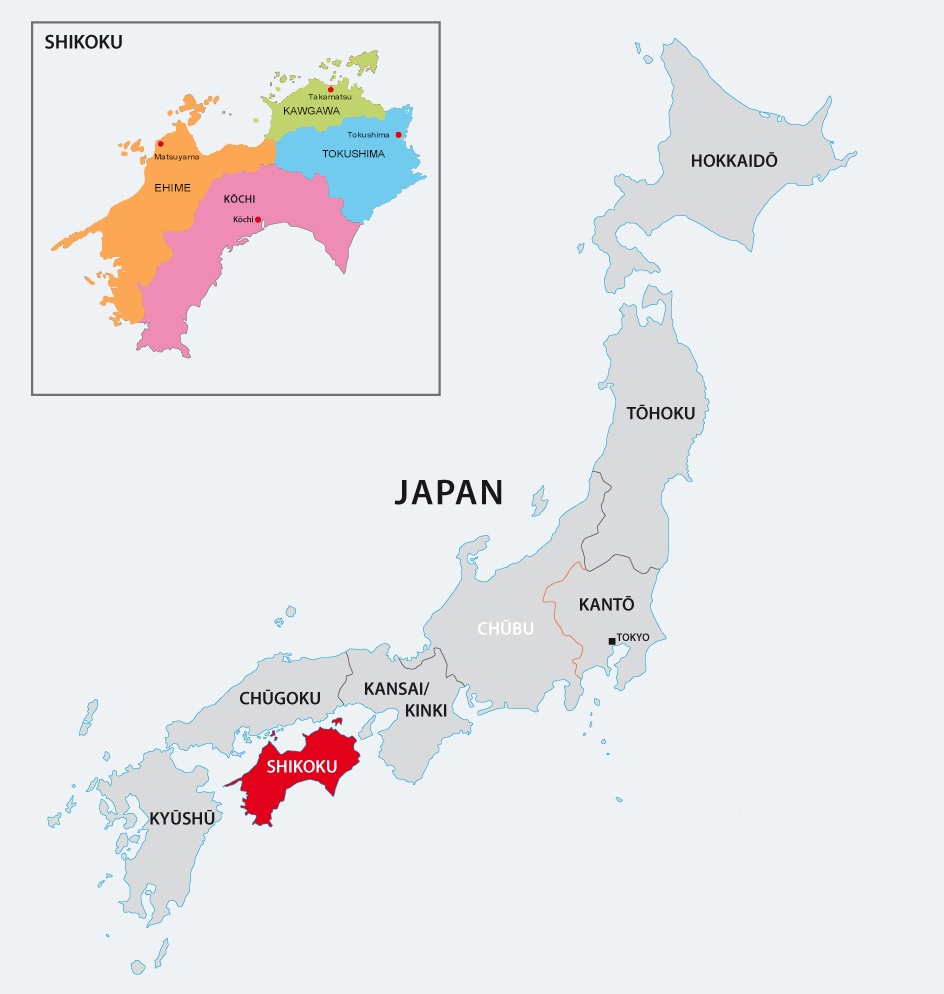
If you don't know where Shikoku actually is, you're not alone—when most people think of Japan, it's the hustle and bustle of Tokyo, the temples and shrines of Kyoto, the food stalls of Osaka and everything in between. But they're overlooking one of the most unique areas in the country.
Shikoku is the smallest of Japan's four major islands, snuggled between the island of Kyushu to the southwest and Japan's main island, Honshu, to the north and east. It's comprised of four prefectures; Ehime, Kagawa, Kochi and Tokushima. Each prefecture is home to incredible local culture, and a wealth of natural beauty. More than any of those things, one thing that sets Shikoku apart from the rest of the country is...
Henro
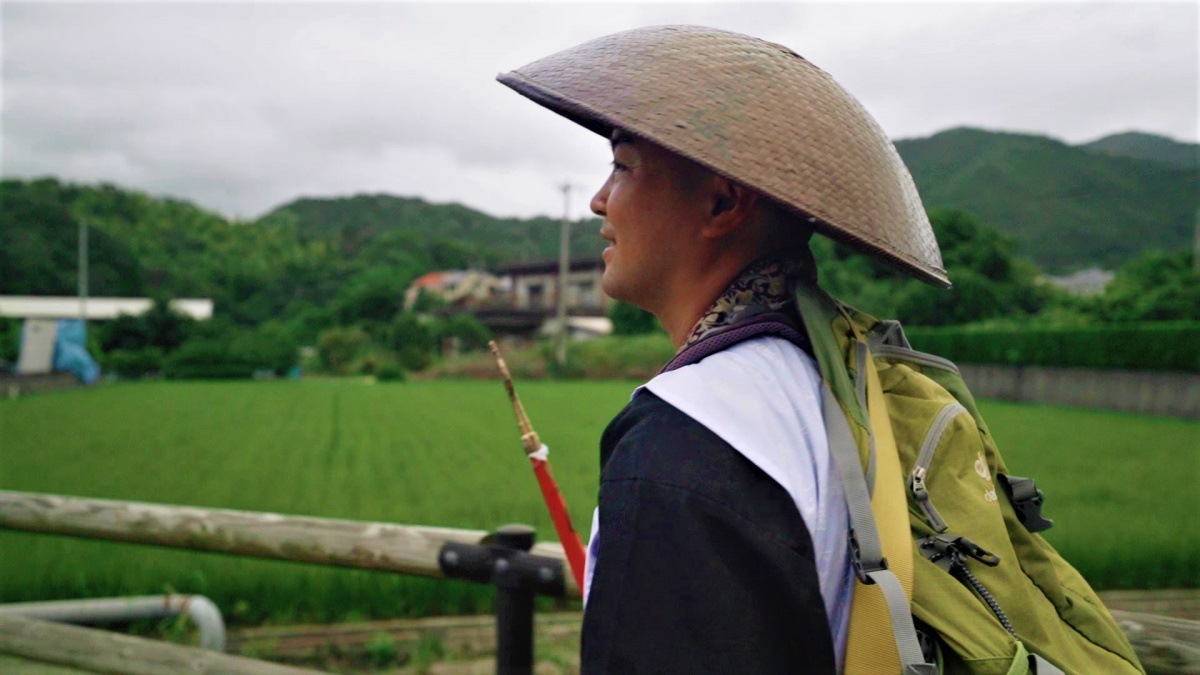
... the Henro! The Henro is a pilgrimage of 88 temples scattered throughout Shikoku's four prefectures. The origins of the Henro are deeply rooted in the origins of Buddhism in Japan; the temples along the route are ones that were visited by Kobo Daishi—the monk who studied Buddhism in mainland China and founded Shingon Buddhism upon his return to Japan—throughout the 9th century. Traditionally the route was walked, and the course—which is about 1,400 kilometers total—could take months!
In present day, many travelers who attempt the pilgrimage do so using the convenience of modern transportation, and may spend years before they manage to visit all 88 temples. That isn't frowned upon; in fact, there's really NO wrong way to do it. Similarly, the reasons for the pilgrimage itself are as multitude and diverse as the people who embark upon it. The important thing is to use the journey as an opportunity to reflect and grow, and of course, to interact with the warmth of the people of Shikoku, and get in touch with the local culture.
We teamed up with Gareth Leonard from Tourist 2 Townie, brought along cameraman Tyler Cave and had the chance to explore each prefecture, so maybe it'll be easier just to show you a small taste of what's waiting along this sacred route!
https://www.youtube.com/watch?v=Sx1AbzeMAhc&feature=youtu.be
Now that you're primed up, let's dive in!
Tokushima Prefecture
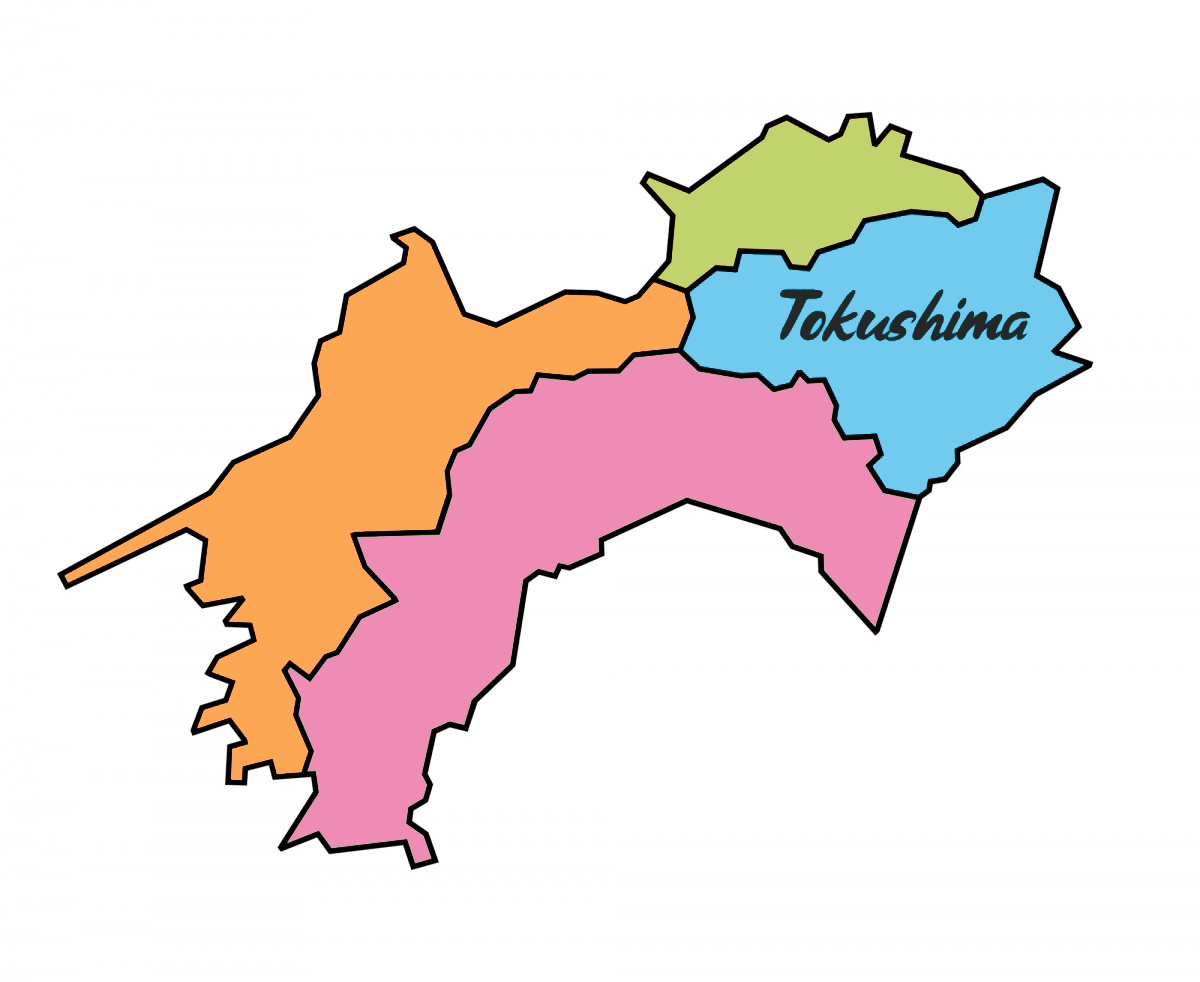
Located on the eastern side of the island, Tokushima Prefecture is linked to mainland Japan by the Akashi-Kaikyo and Naruto Bridges (more on that later!). This prefecture is home to a truly wild side of the country, as well as some of its most enduring traditions and some truly incredible food.
What to Do
As the location of the first temple along the Henro pilgrimage, the capital city of Tokushima Prefecture—Tokushima City, which is actually the smallest of the island's major cities—is the perfect place to start your deep dive into the region! It's easily accessible from Honshu (especially the Kansai area), since highway buses regularly run across its bridges, and there are domestic flights to and from the Tokushima Awaodori Airport, which is just outside the city.
And oh, what a city it is! The city straddles the mighty Yoshino River, the second largest river in Shikoku. Although most of the buildings were destroyed in World War II, it has rebuilt itself into a modern metropolis, with all the comforts one would expect from one of Japan's urban centers. It also just so happens to be chock-full of sightseeing opportunities, so let's dive in.
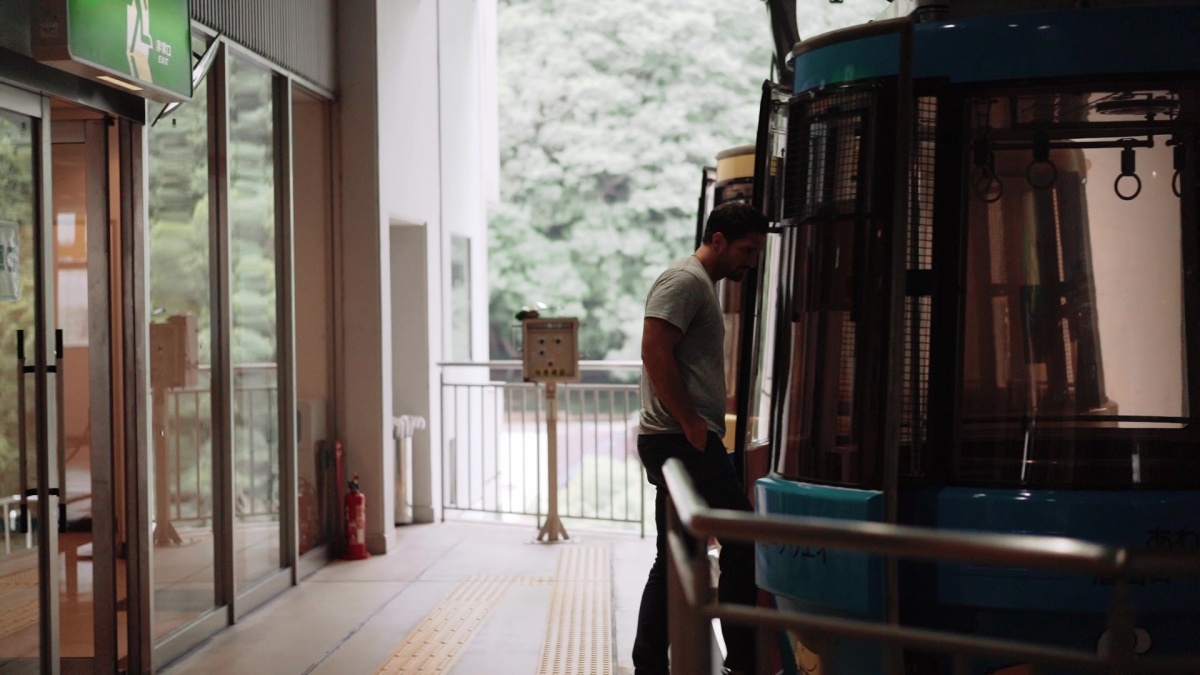
Mount Bizan
Known by locals as a symbol of the city, the view from the top of Mount Bizan is truly unparalleled. It overlooks the entire city, and on clear days you can see the islands dotting the ocean offshore. While it makes for a gentle hike to the summit, we recommend taking a ride on the Bizan Ropeway, which can be found on the fifth floor of the Awa Odori Kaikan. Although a short ride, the scenery as you ascend is also lovely, especially in fall when the leaves are changing colors, and in spring when the cherry blossoms are blooming.
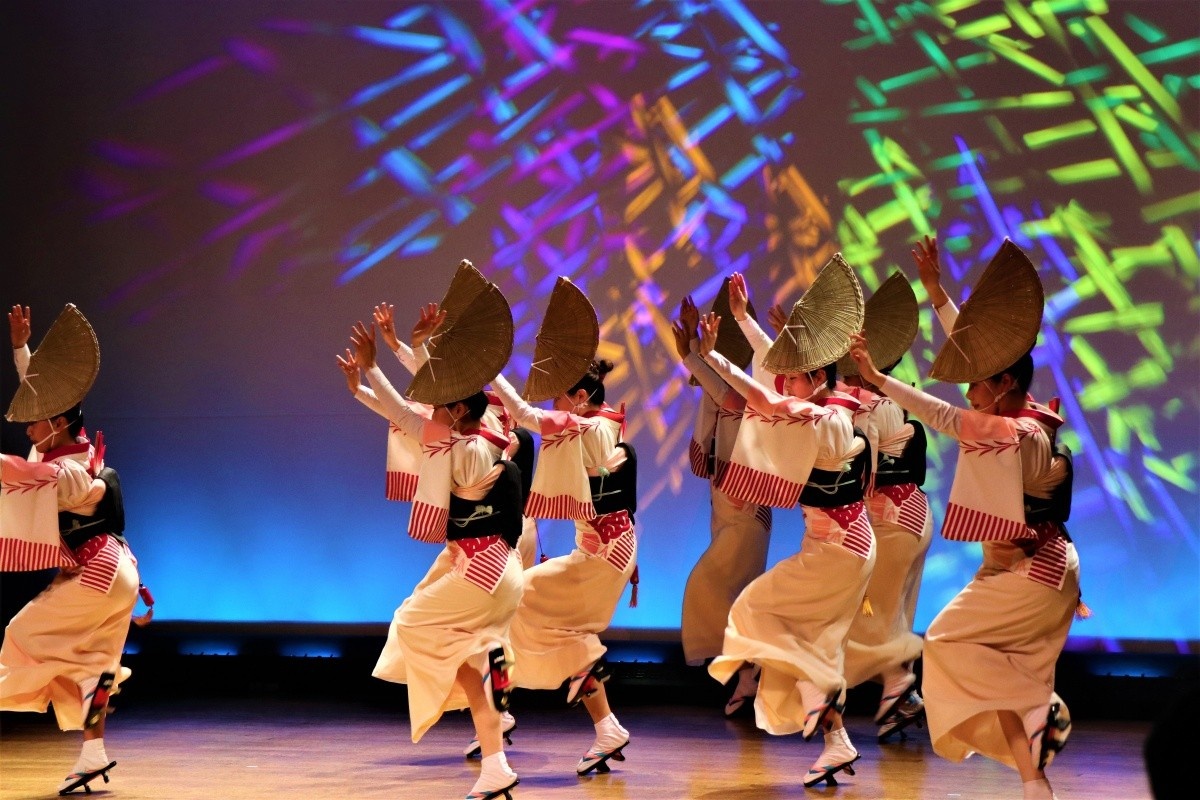
Awa Odori Kaikan
Also known as the Awa Odori Museum, the Awa Odori Kaikan is a must-visit for anyone who stops by Tokushima. The Awa Odori is arguably Japan's most famous dance festival, and it originated right here. The main event is held every year in summer (between August 12-15), and thousands of people flock from all over Japan to join in on the festivities. If you aren't visiting in summer, the Awa Odori Kaikan is the one place where you can still enjoy daily performances from local dance troupes, and learn about how the dance has transformed over the years. After seeing the real thing, the audience is encouraged to try their hand at the dance as well!
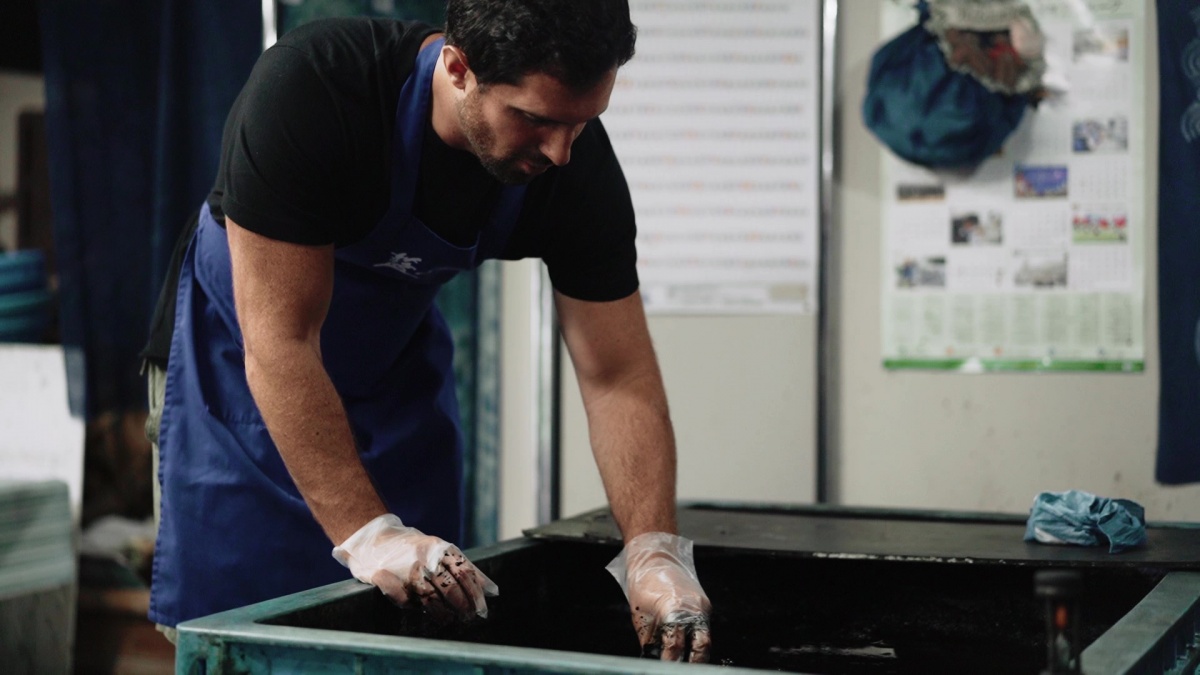
Aizumicho Historical Museum Ai-no-Yakata
A bit outside of Tokushima City, Aizumicho Historical Museum is a well-preserved home and factory from Tokushima's past, when the area prospered thanks to the indigo trade. There is a showroom displaying elegant, gorgeous items from the past, and an intricate series of models that shows exactly how indigo is harvested.Indigo goods are still dyed here to this day, and the big highlight of any visit is that you can get a hands-on experience dying their own handkerchief! There's no better souvenir than one you made yourself and can take home with you!

Experience the Naruto Uzushio
We said we'd get back to it, and here we are! The Naruto Bridge spans the Naruto Straight, which is the fastest tidal current in Japan! The bridge itself is one of the largest in the world, at 876 meters, and connects Tokushima Prefecture to mainland Japan. One of the key features of the bridge is its Uzu-no-Michi Walkway, a glass-bottomed walkway some 45 meters above the water that gives visitors an awesome view of the main attraction, the Naruto uzushio whirlpools. These pools are caused by the powerful tidal current, and can get up to about 20 meters when they're at their strongest (which is typically winter).
If you're feeling extra adventurous, you can hop on board a ship that will swing around the Naruto Straight, and really feel the raging torrent of the currents! It's exhilarating, and also a little intimidating, which means it's an experience you won't soon forget!
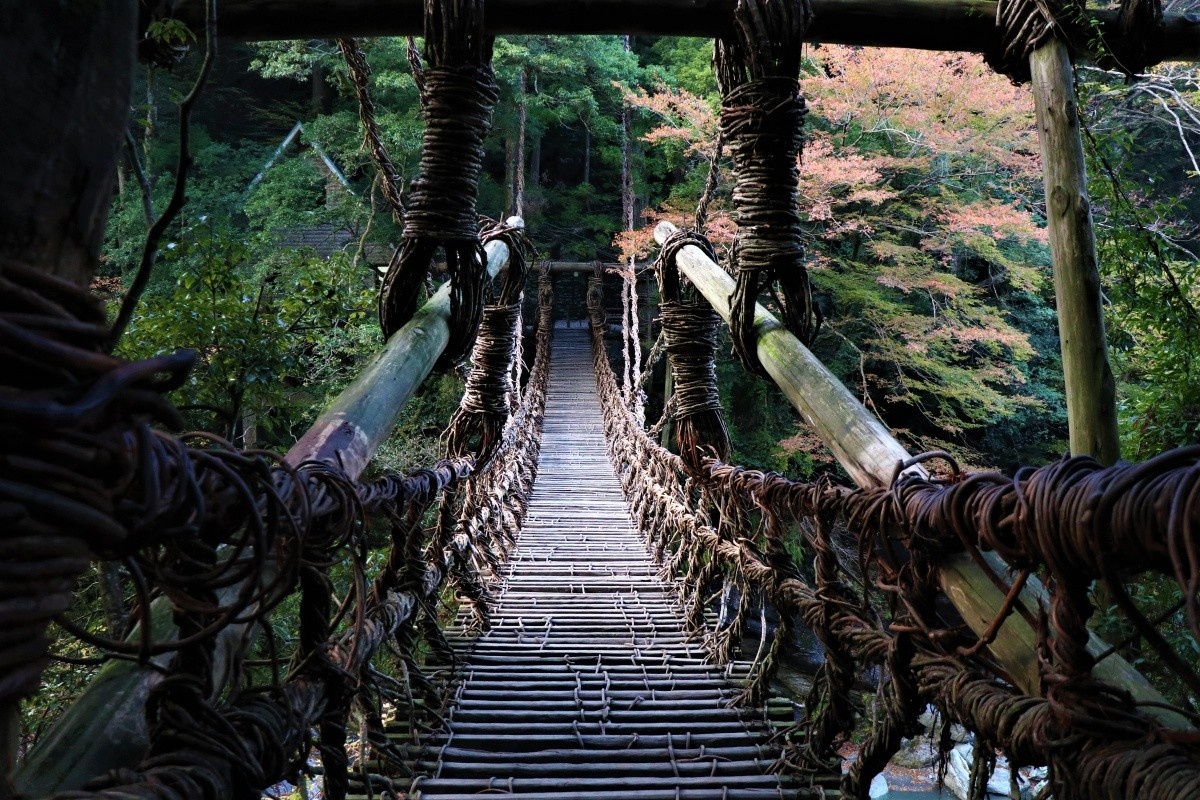
Traverse the Iya Valley Vine Bridge
The Iya Valley lies in the western part of Tokushima, surrounded by the mountains from which it was carved by the Iya River. This lush location is home to one of the most enduring mysteries of the region; the Iya Valley kuzurabashi, or vine bridge.
Designated an Important Tangible Folk Cultural Property, the origin of the vine bridges in the Iya Valley is the stuff of legends. One legend attributes their construction to the Heike clan, who built them so that they could be cut in case they were pursued by their enemies, the Genji clan. Another attributes them to Kobo Daishi, who wanted them constructed so that pilgrims would have an easier time traversing the valley on their spiritual journey. Either way, to walk across the 45 meters of swaying planks and stare at the river 14 meters below is not for the faint of heart! This is another experience that should NOT be missed.
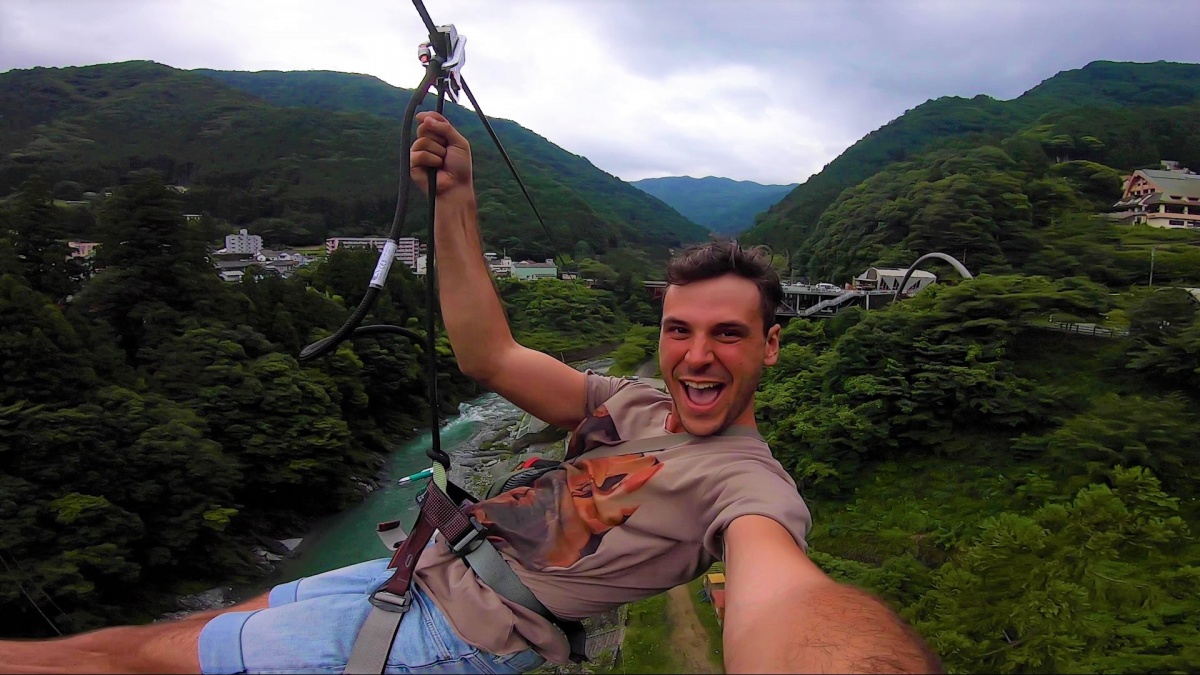
Zipline at Iya Valley Forest Adventure
No trip to this picturesque valley would be complete without a stop at the Iya Valley Forest Adventure! Visitors strap in to a belay system and navigate an obstacle course in the forest, which culminates in a pulse-pounding double-tiered zipline across the river and valley below! Thrillseekers will feel right at home, but there are also family-friendly programs available for anyone looking for a little more relaxed fun.
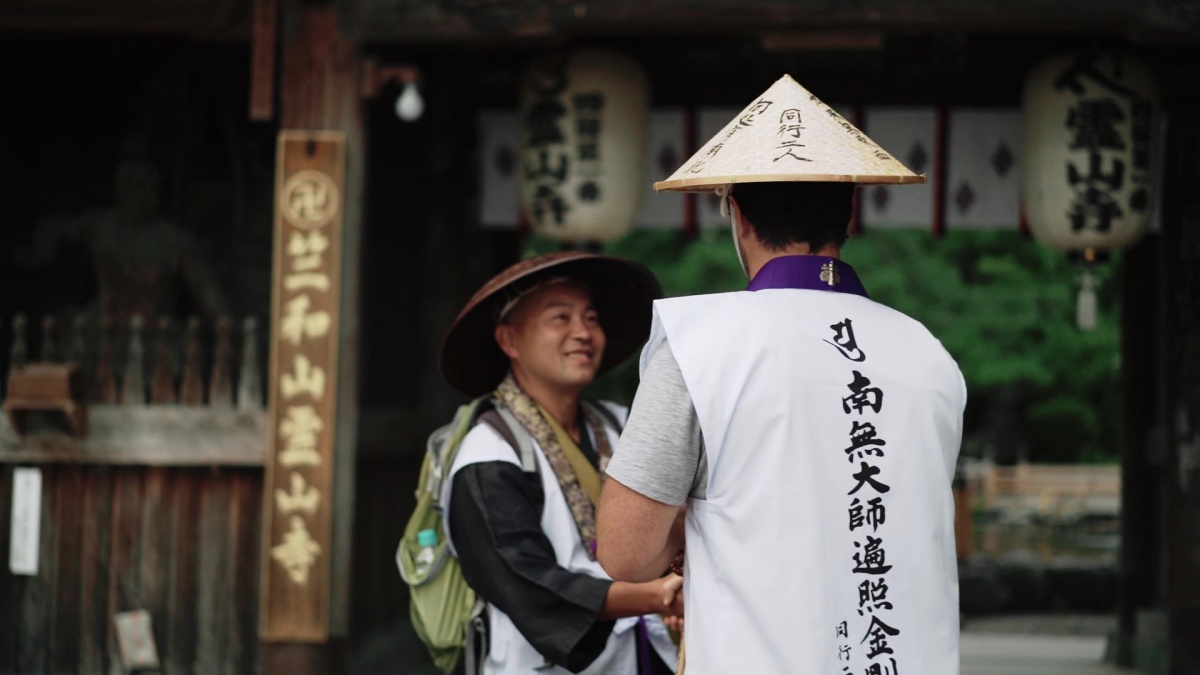
Ryozenji Temple
The first stop on the Henro, Ryozenji Temple is just outside of Tokushima City in the town of Naruto, and the natural starting point for many pilgrims. Conversely, others start their journey in reverse order, and finish their sojourn here instead. As both a start and end point, there is an expansive shop where you can get decked out in all the gear you'll need to complete the Henro; the sugegasa hat to block the sun and rain, the hakui white vest meant to represent innocence, a rosary to bring fortune, a staff to help with walking and more!
The temple is said to have been founded in the early 8th century, and is considered especially close to Kobo Daishi because of its relative proximity to Koyasan, the holiest site for Shingon Buddhism. The grounds themselves are quite lovely, with a fine wooden gate that leads into a central garden, complete with a koi pond and a two-story pagoda.
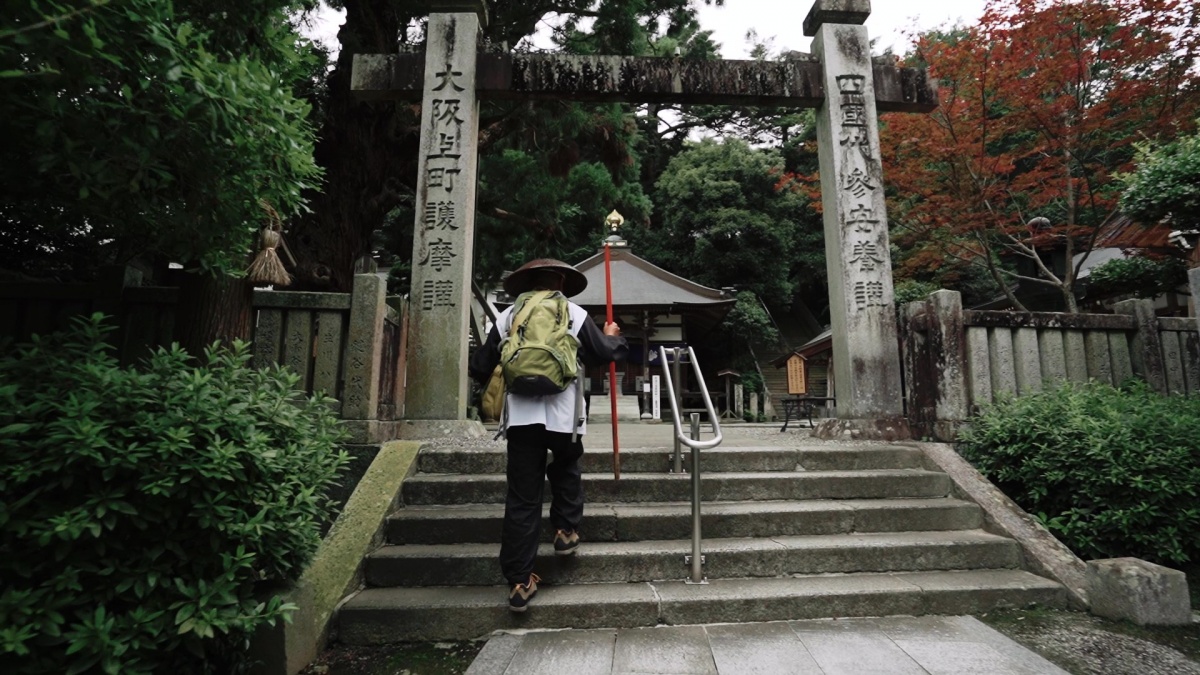
Gokurakuji Temple
Stop number two on the pilgrimage is also in Naruto, just 15 minutes or so down the road. Gokurakuji Temple was also founded in the 8th century, and is actually considered a National Treasure. This temple is notable for several reasons; there's an enormous tree thought to have been planted by Kobo Daishi himself called the "Cedar of Long Life." There's also a small jizo statue that pilgrims are encouraged to try to lift while considering their wish—if the statue feels heavy, the wish isn't meant to be.
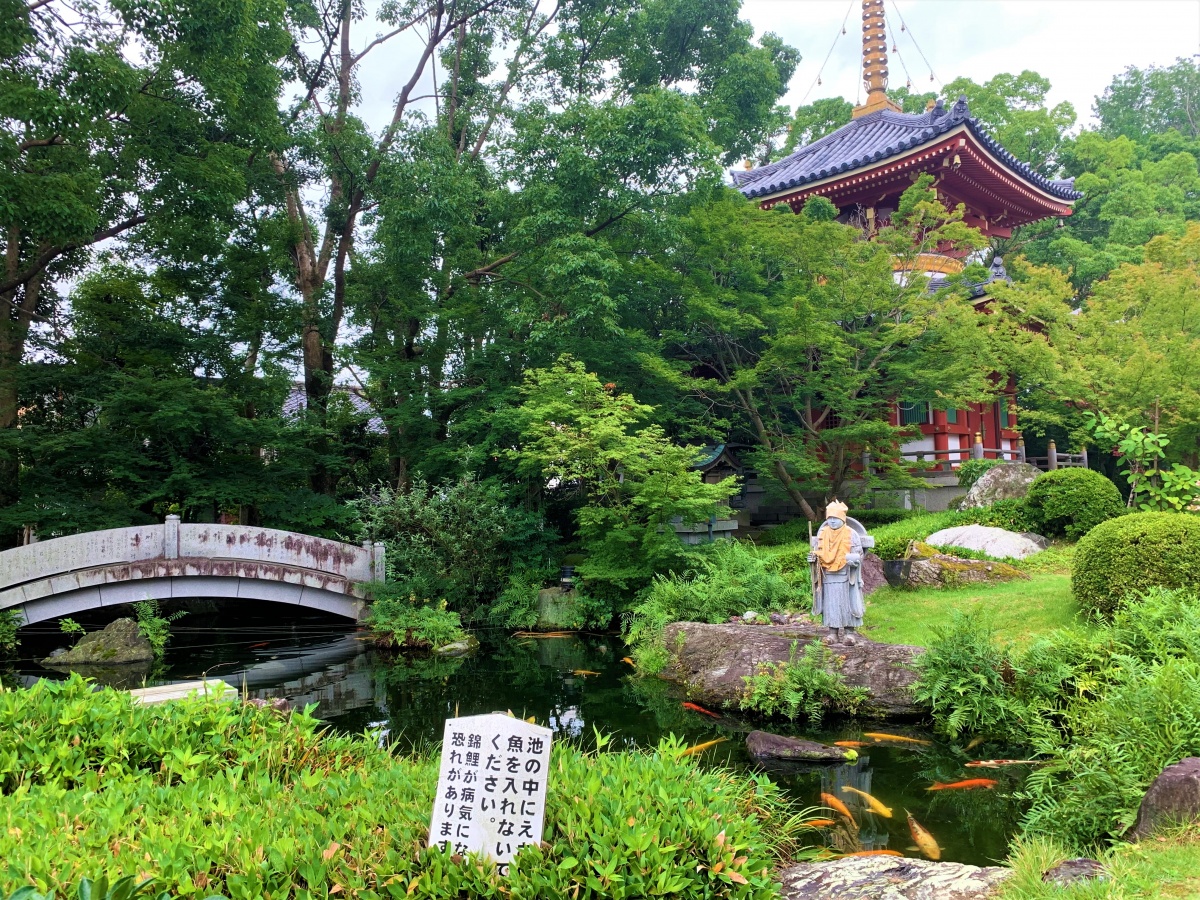
Anrakuji Temple
Stop number six on the pilgrimage is Anrakuji Temple, which is about 17 kilometers from Ryozenji. Because Anrakuji offers the unique opportunity for temple lodging, it is the natural stopping point for pilgrims who start their journey in order. The fare is simple shojin ryori, or buddhist cuisine, and the lodgings are modest—but the bathing facilities are gorgeous! One real treat is the opportunity to sit in on some of the temple's unique buddhist ceremonies, which are incredible to witness, even for the uninitiated. Funnily enough, there's also a vending machine that sells canned beer and chu-hi, canned shochu cocktails, so the ambiance isn't quite as formal or austere as it might sound.
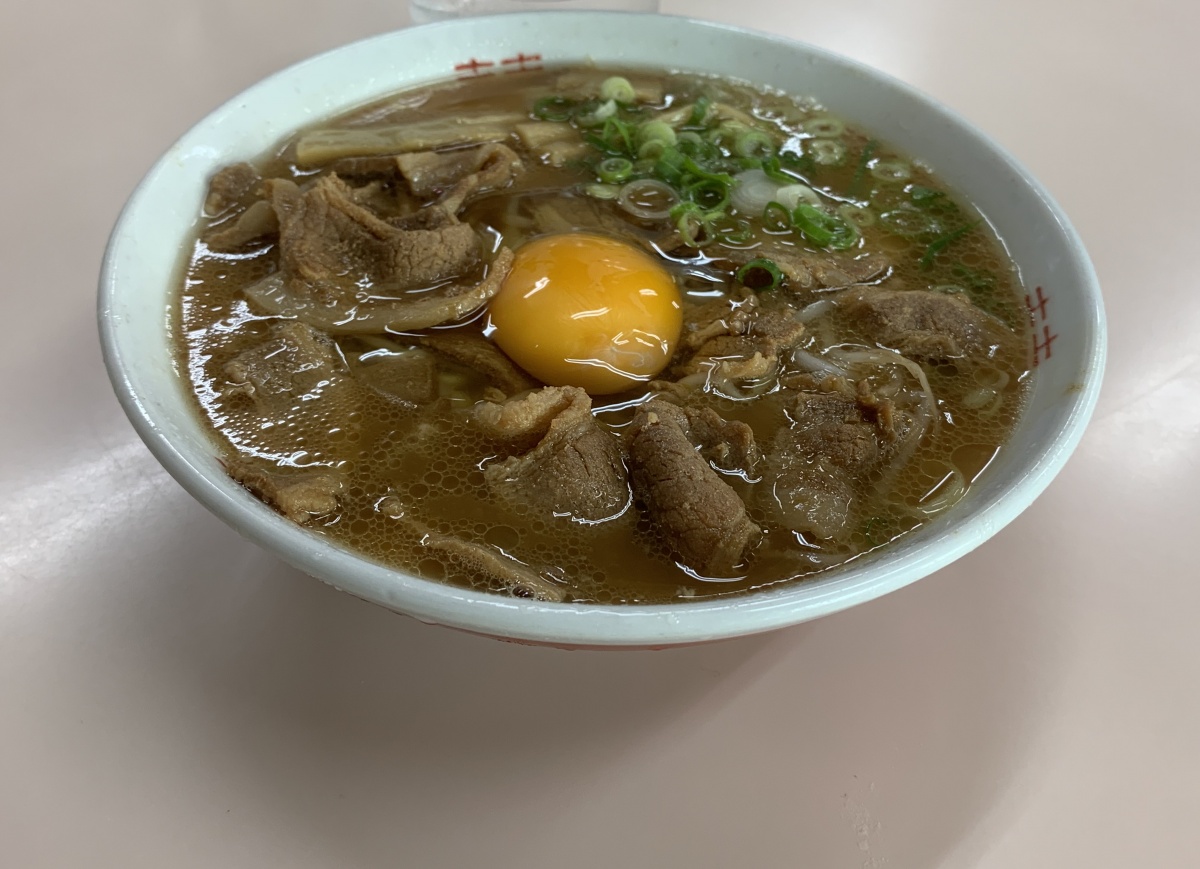
Tokushima Ramen
One thing about the Henro is that all that walking is sure to work up an appetite! Fortunately, Tokushima is home to a specialty ramen that is sold in over 100 shops in Tokushima City alone! Its thick soup is a combination of tonkotsu pork broth and soy sauce, combined with toothsome noodles, tender slices of pork, bamboo shoots and spring onion. It's topped with a raw egg, which makes the broth somehow even thicker and richer—if it sounds like a lot, it IS, but it is oh so worth it!
https://www.youtube.com/watch?v=U42y_0Nbuys
If all of these pictures have left you hungry for more, check out Gareth Leonard's firsthand experience in Tokushima, as he takes the first steps of the Henro, and his deep dive into Shikoku's local culture!
Kagawa Prefecture
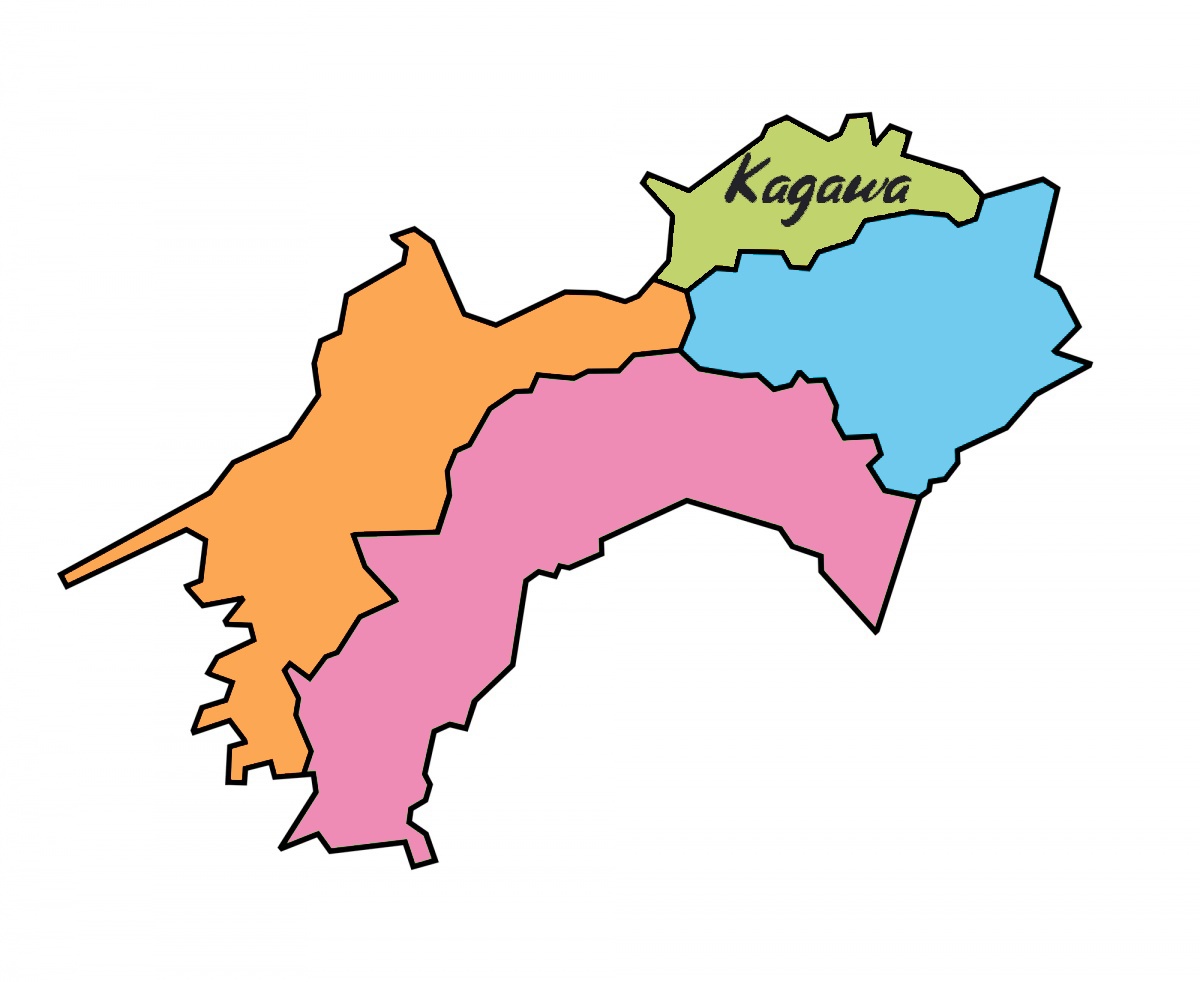
Next up is Kagawa Prefecture! Though it's the smallest of Shikoku's four prefectures (the smallest in the entire country, actually), Kagawa has plenty of deep experiences to offer ambitious travelers. Not only is it home to what is arguably the country's most beloved udon, but the islands that dot the Seto Inland Sea host the Setouchi Triennale, an international art festival held every three years. And that's not even mentioning the breathtaking beauty of one of Japan's most spectacular gardens!
What To Do
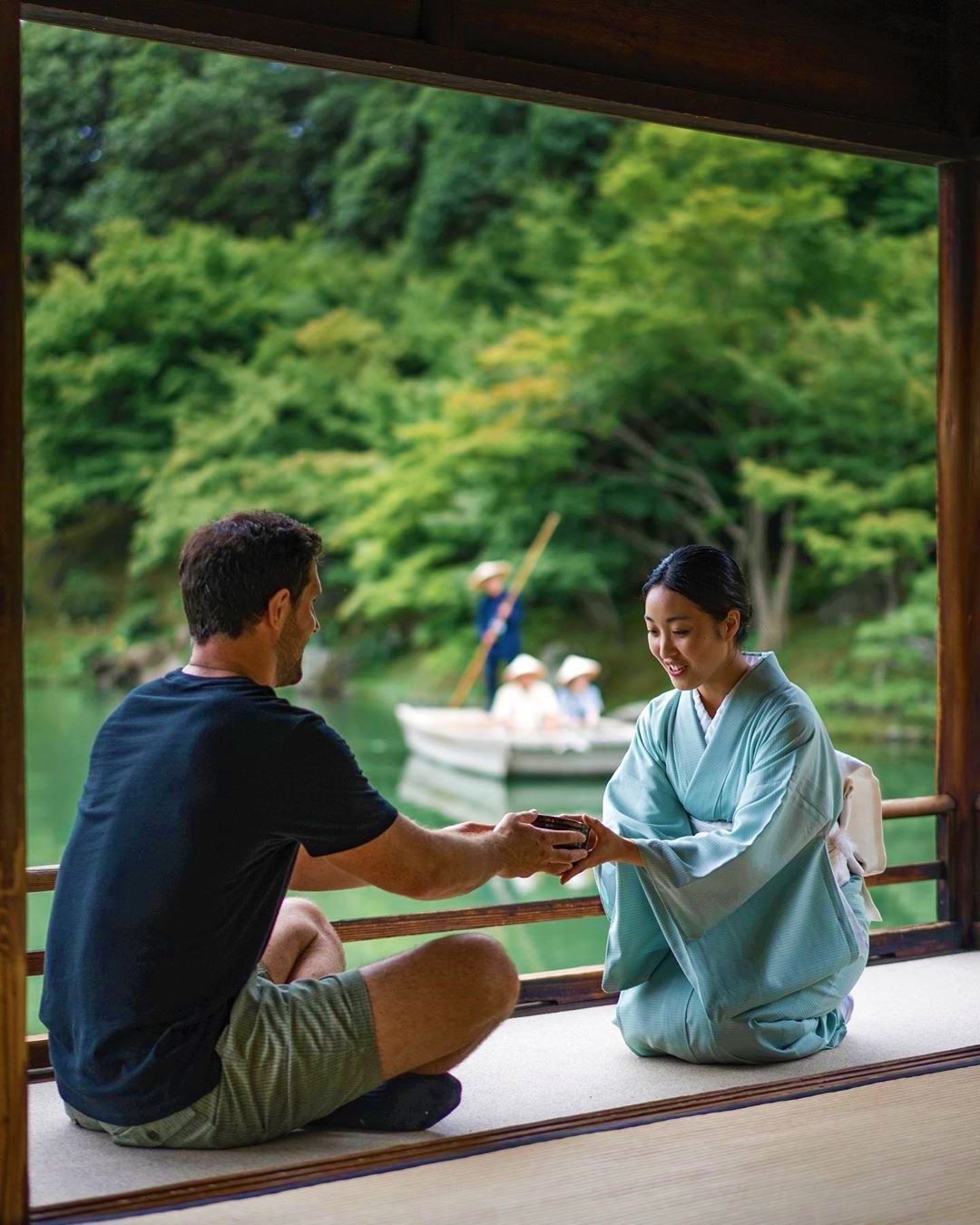
The capital city of Kagawa is the seaside port, Takamatsu. This former castle town was home to the Matsudaira Clan, who are responsible for the construction of what is considered by many to be Japan's most beautiful garden (more on that in a moment). With a rich history, a surprisingly vibrant art community and incredible restaurants, it offers the convenience and charm travelers have come to expect from Japan. Let's dive in to just a few of the exciting opportunity waiting in Kagawa!
Ritsurin Garden
The crown jewel of traditional Japanese gardens and one of the major highlights offered by a visit to Kagawa, Ritsurin Garden is a must-visit! Constructed over a year-long period in 1745 at the behest of the leader of the Matsudaira Clan, this exceptionally spacious garden features six tranquil ponds, thirteen landscaped hills, a relaxing teahouse from which visitors can enjoy some silky smooth matcha while gazing out over the landscape, and a Folk Craft Museum. Seasonal highlights include the vibrant foliage of fall and the ephemeral, delicate beauty of cherry blossoms in spring. A leisurely stroll through Ritsurin is all it takes to understand why it was designated a Special Place of Scenic Beauty.
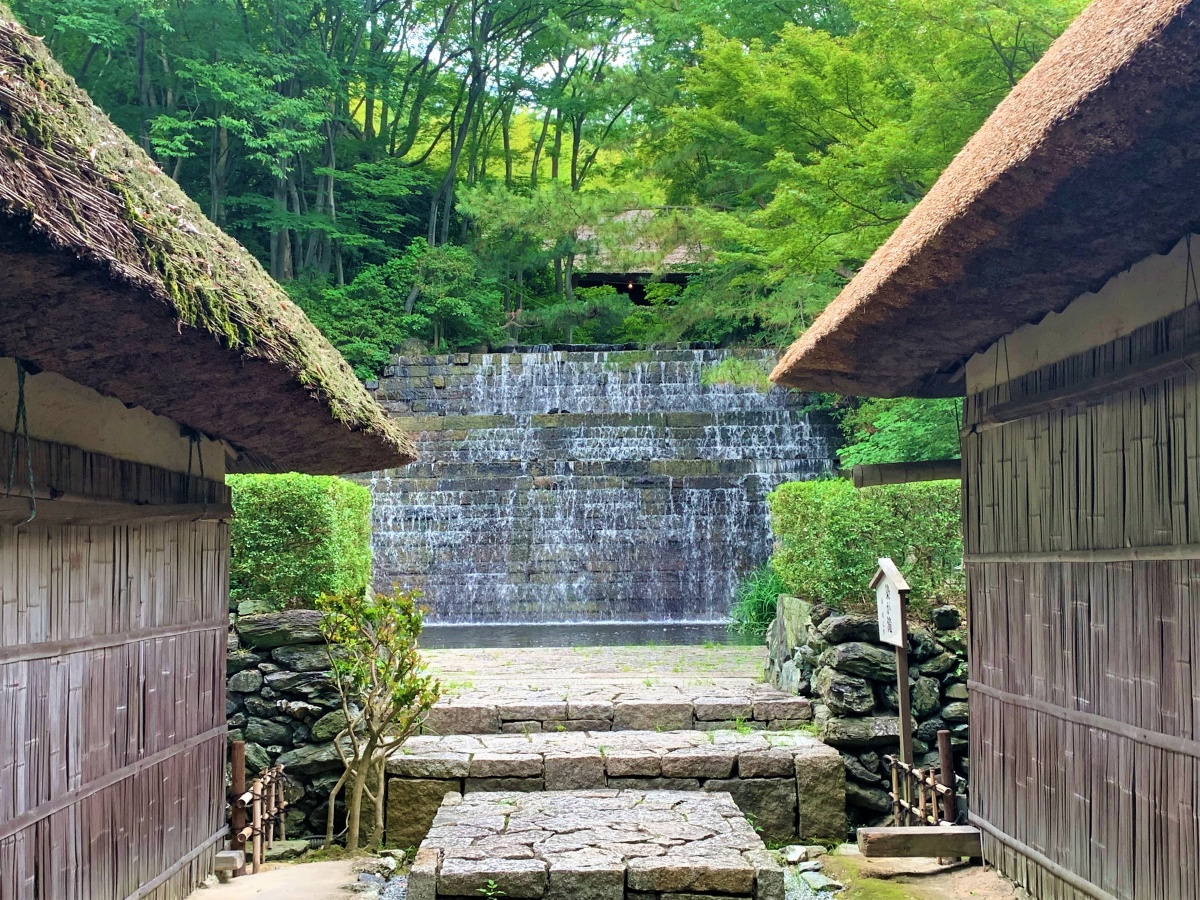
Shikoku Mura Architectural Park
Looking for a way to step back into the Japan of yore? Then the open-air architectural park Shikoku Mura is the perfect place for you! Part gentle hike, part museum, Shikoku Mura houses some 33 historical buildings that have been relocated from around the island, many of which are over 300 years old! These buildings provide incredible insight into the lifestyles of the past, including an old kabuki theater, a sugar refinery, a soy sauce manufacturer, and more. There is also a museum on the grounds that features works of modern art, and a recreation of the Iya Valley vine bridges at the park entrance. Tucked away on a hillside of Yashima, the greenery and seasonal flowers provide natural beauty that demands multiple visits!
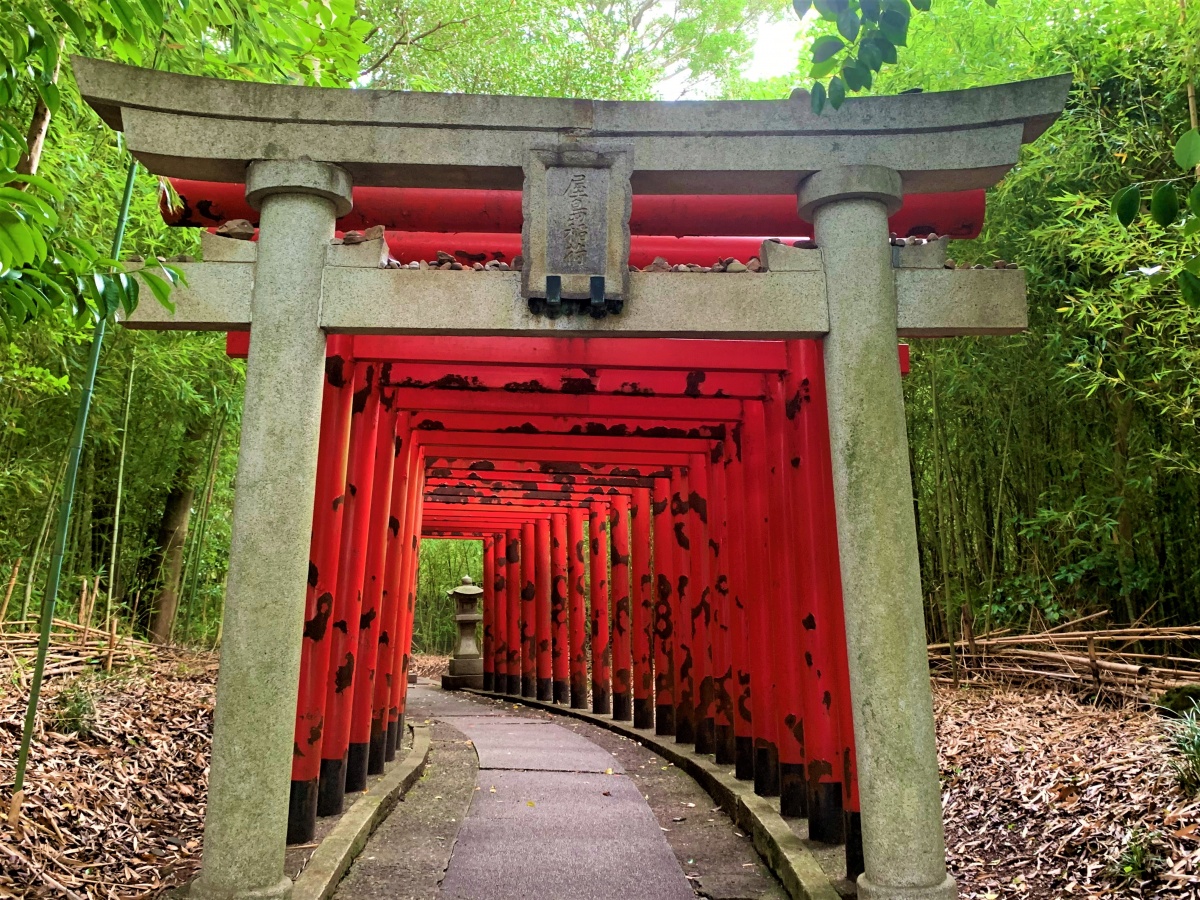
Yashima Temple
Yashima Temple is the 84th stop on the Henro Pilgrimage. In addition to an expansive temple complex (as well as multiple vermillion torii tucked away behind some incredible tanuki statues), this area is home to a hilltop lava plateau that offers a gorgeous panoramic view of Takamatsu and the Seto Inland Sea. It's also a place of historical interest, since the Genji and Heike clans fought the historic Genpei Battle here, and other nearby locations.
Konpirasan
Also known as Kotohiragu Shrine, Konpirasan is a sacred place venerating the God of the Sea, and many pilgrims would come to pray for good fortune at the outset of a long journey. Speaking of long journeys, the stroll to the top is no joke, some 785 steps to the main shrine, and a total of 1,368 steps to the rear shrine! But the view of the surrounding Sanuki Plain is gorgeous, especially on clear days, and totally worth the trip. Because Kotohira is considered exceptionally sacred, visitors are prohibited from taking photos of the main shrine head-on.
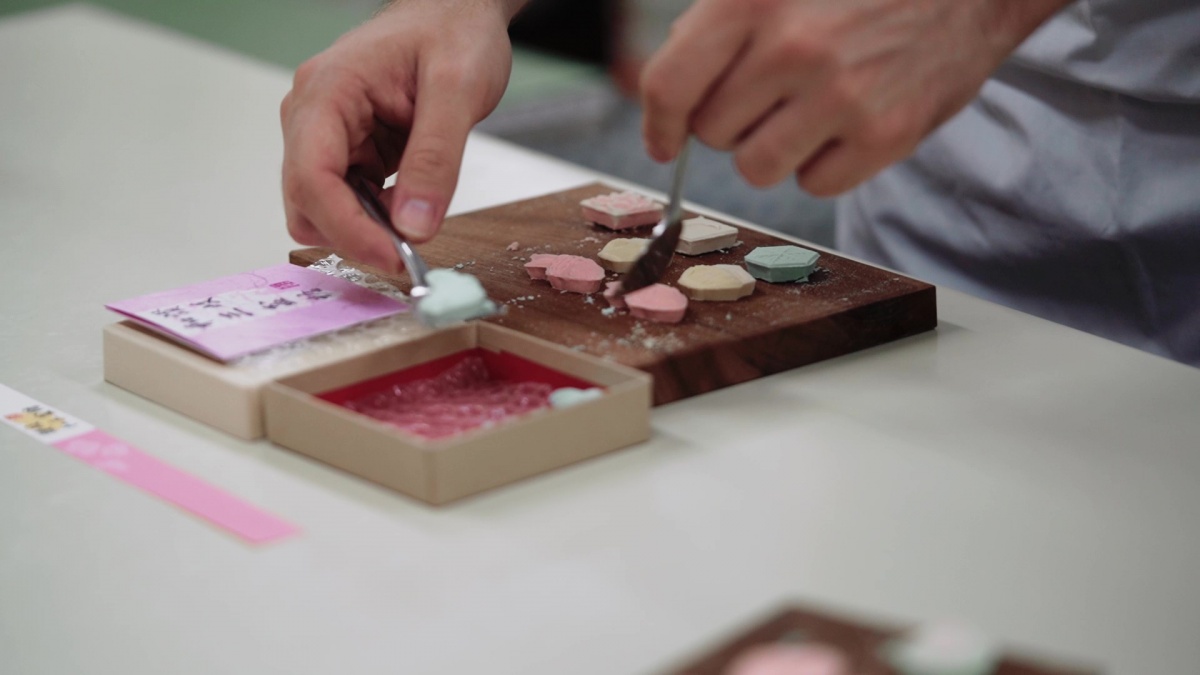
Wasanbon Traditional Sweets
Kagawa (and part of Tokushima) is the center of production for a luxury sugar known as wasanbon. This high-end sugar was an important regional export in the past, and still fetches a pretty penny to this day. The sugar is especially fine, with a delicate sweetness that is perfectly suited for traditional Japanese confections! Visitors can get hands-on creating their very own wasanbon at the Nishikiya School near Konpirasan. The process is actually rather simple, and involves tightly packing the sugar into intricate wooden molds. The variety of pastel colors make the sweets a treat for the eyes as well, and there's nothing better than enjoying one that you've just created with a cup of delicious matcha.

Nakano Udon School
For those who don't know, udon is a thick flour noodle that can be found in Japanese cuisine throughout the country. Kagawa is actually the udon capital of Japan—boasting the highest consumption of udon in the country—and the regional Sanuki udon is a signature dish that visitors simply cannot miss. While it is supremely satisfying to try at one of the hundreds of udon shops in the city, if you want an authentic experience, why not try your hand at making your own at the Nakano Udon School? Under the tutelage of a seasoned instructor, you can go create your own signature noodles step by step, from kneading the dough, cutting and (most importantly) dining on the final product! While we'd love to describe the activity in greater detail, if you want a taste of what to expect, it'll be faster to check out Gareth's video below!
In addition to udon and wasanbon, you won't want to miss Kagawa's excellent bone-in braised chicken. This signature dish—called honetsuki-dori in Japanese—can be found in restaurants throughout the prefecture (and there are plenty in Takamatsu). Simultaneously crunchy, succulent and tender, it goes perfectly with a refreshing pour of Japanese whiskey.
Hungry for more? For a closer look at Konpirasan, wasanbon and the incredible luxury of a stay at a traditional Japanese inn, check out this episode as well!
Kochi Prefecture
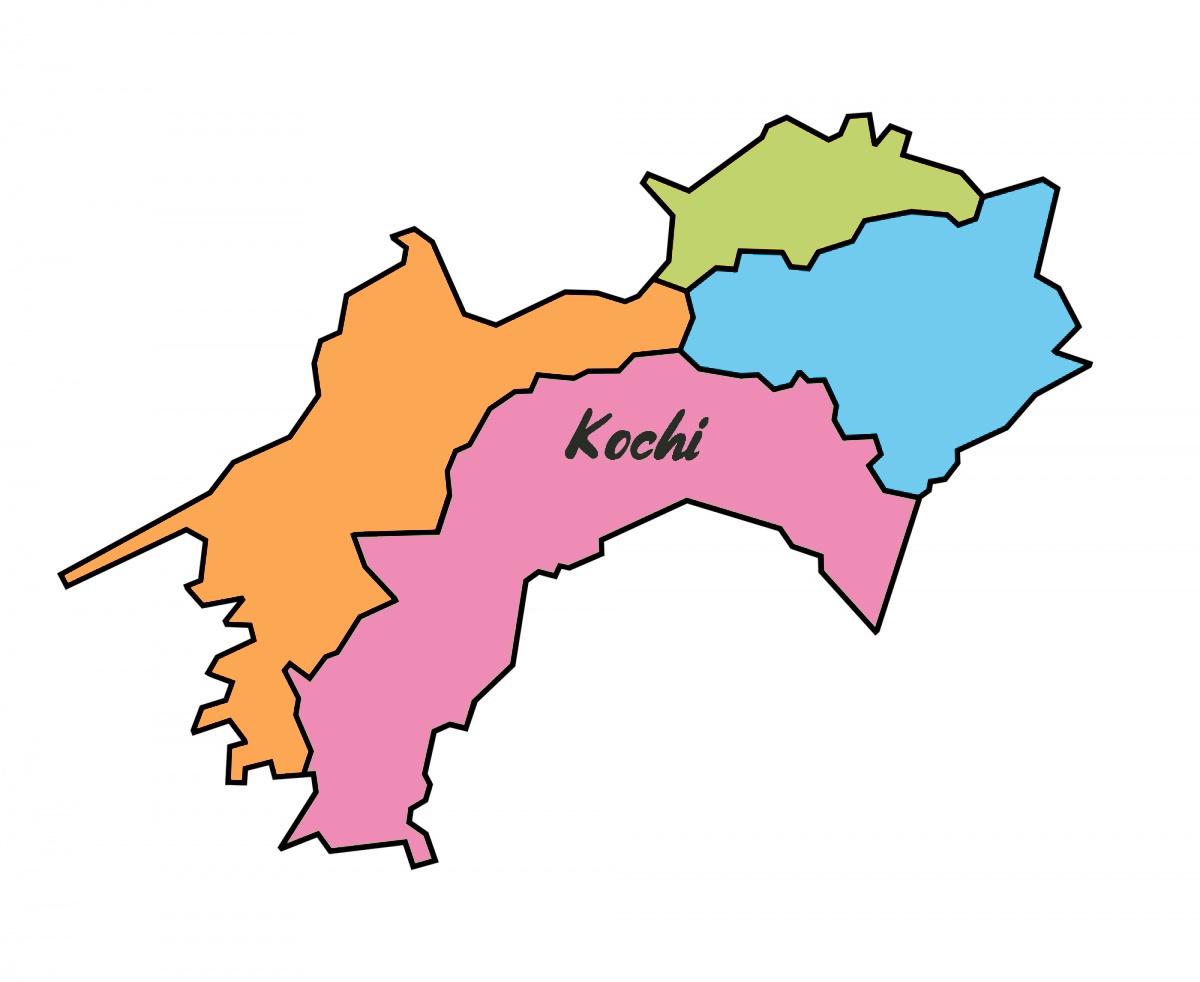
Situated on the southern coast of the island, Kochi is the largest prefecture in Shikoku, and also the least populous. Much of the prefecture is rural, since it's incredibly mountainous, with lots of dense forestry, plenty of rivers and an expansive coastline. This abundance of nature makes it an ideal place for outdoorsy types, and provides ample opportunity for all sorts of adventures.
What to Do
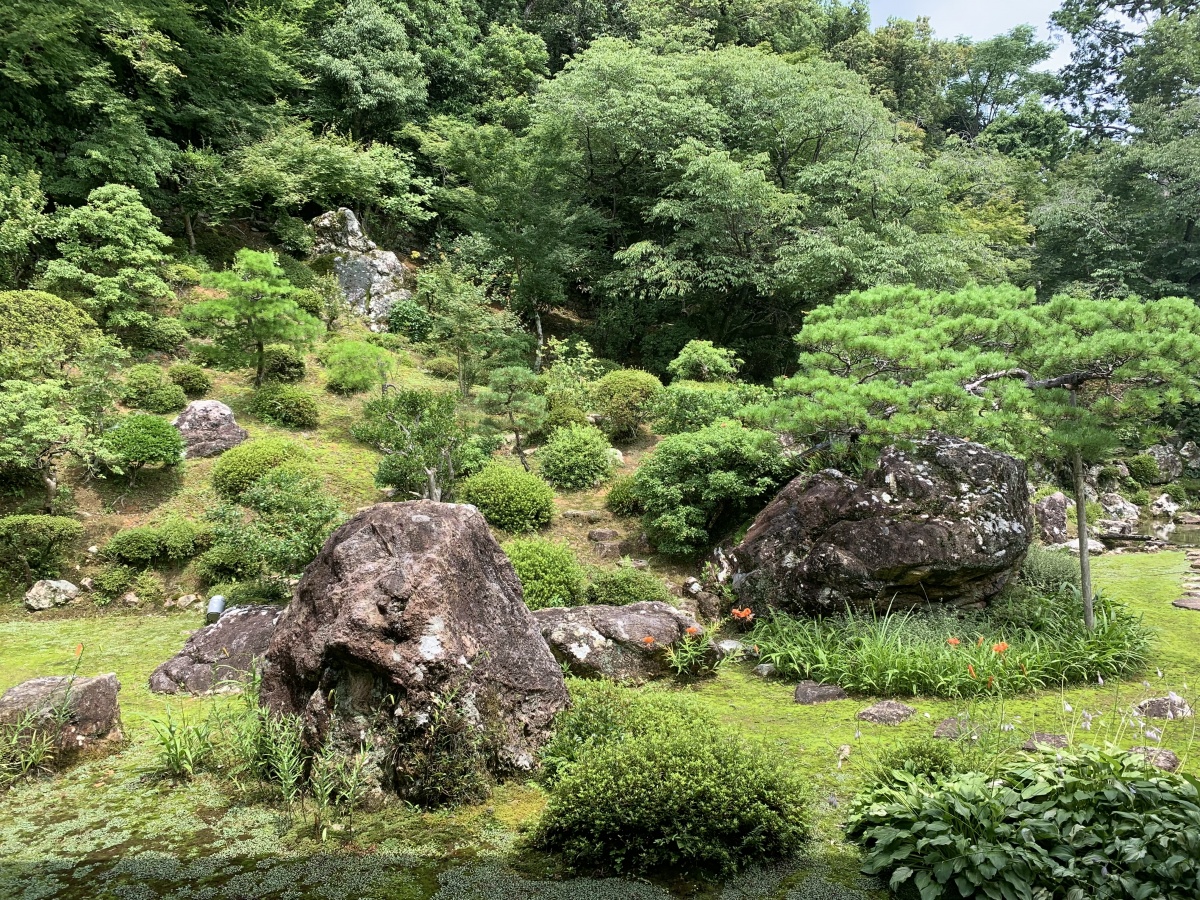
Kochi City is the capital of the prefecture, and home to some 40% of the overall population. This sprawling city is easy to access, and has a small but vibrant downtown area centered on a large covered mall. In addition to the many shops and restaurants contained within, the mall also plays host to one of the prefecture's most enduring traditions, the Yosakoi Festival. Spanning four days (August 9-12) every summer, 200 troupes from around the country gather to participate in a dance as vibrant and varied as its participants. There's plenty to enjoy throughout the year, so let's dive in!
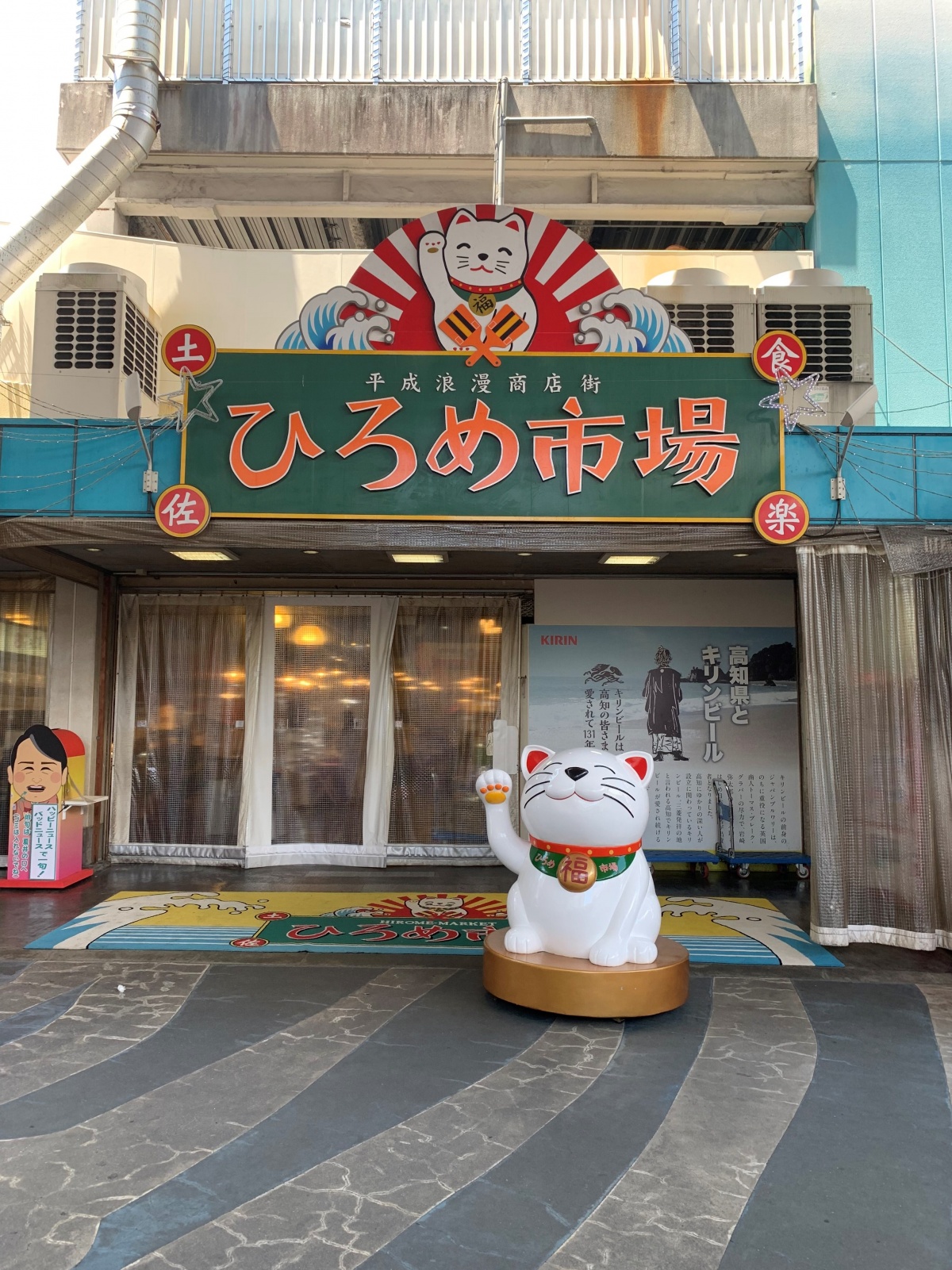
Hirome Market
A staple to Kochi's food and nightlife scene, Hirome Market is an obvious first stop when exploring the city, before venturing out to the rest of the prefecture. Inside there are some 65 stalls peddling specialty food and drinks for which the region is known, as well as classic culinary staples. There are tables set up throughout the market, so visitors can buy a bit of everything and then slide up next to locals and share a bite to eat and a drink (check out the matcha beer sold here!). It's open during the day (and not uncommon to see people drinking, even at lunch), but the ambience at night is unbeatable.
It's also a stone's throw from Kochi Castle, which makes it the perfect place to recharge after a stroll through the castle grounds.
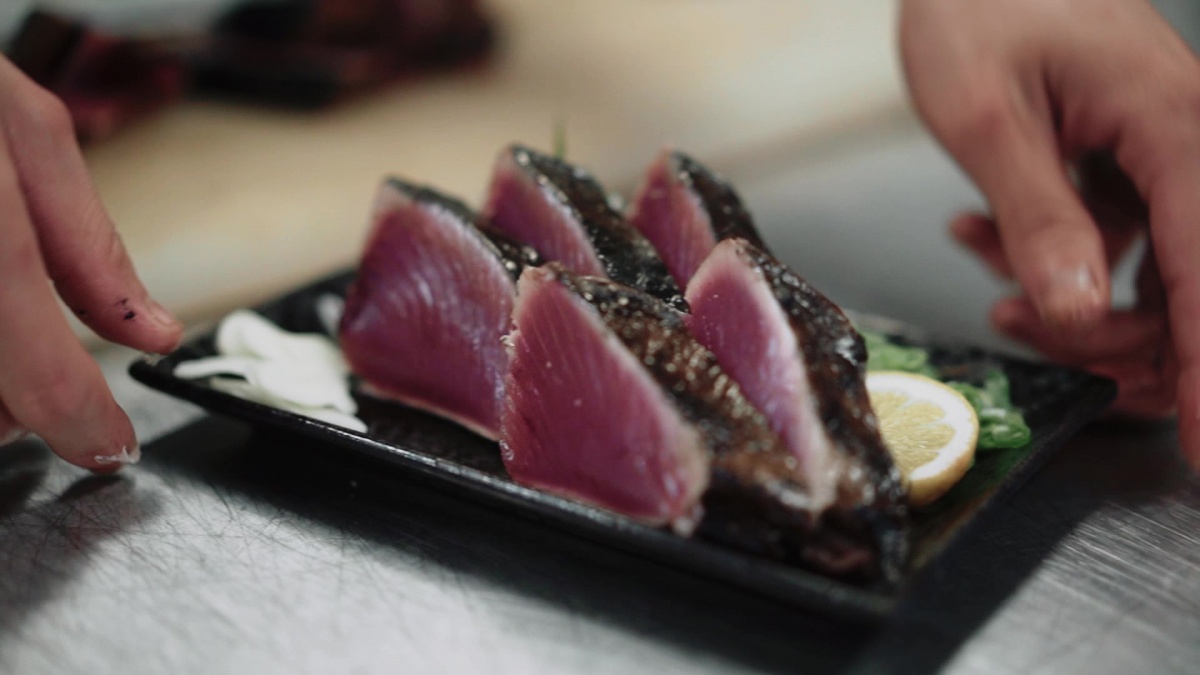
Katsuo Tataki
Hirome Market is also the perfect place to sample what is perhaps the representative dish of the prefecture, katsuo no tataki. The soul food of Kochi is thickly sliced bonito sashimi that is seared over straw, and served with a sprinkling of salt and some ponzu (citrus soy sauce). The meaty unctuousness of the fish is excellently complemented by the smokiness of the straw, and the final citrus pop at the end really sets it off. At some restaurants you can watch as they grill it to perfection, but beware—it'll make you hungry!
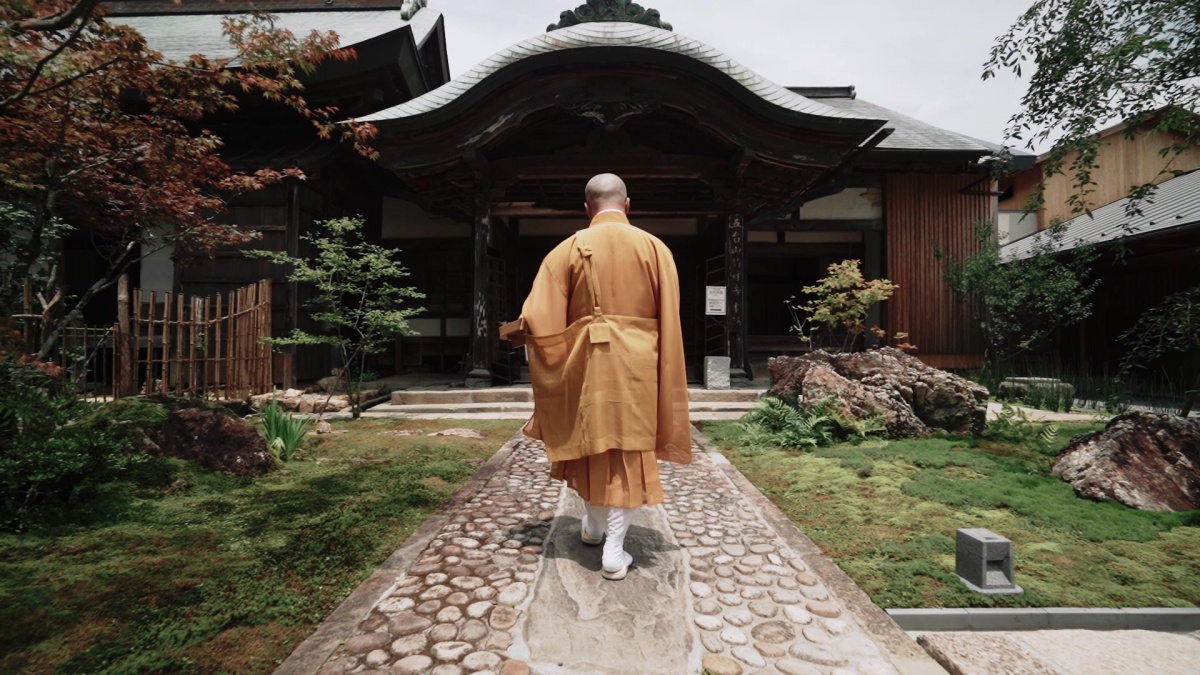
Chikurinji Temple
Stop number 31 on the Henro, Chikurinji is full of incredible features representative of Buddhist temples. Its expansive gardens are a deep, mossy green in the summer, and full of colorful maples and ginkgo trees in fall. It has a grand wooden entranceway, and the grounds are watched over by a five-story pagoda. This stop is also a great place to try your hand at shakyo, which is a type of calligraphy in which practitioners copy Buddhist scriptures to help them along their path to enlightenment.
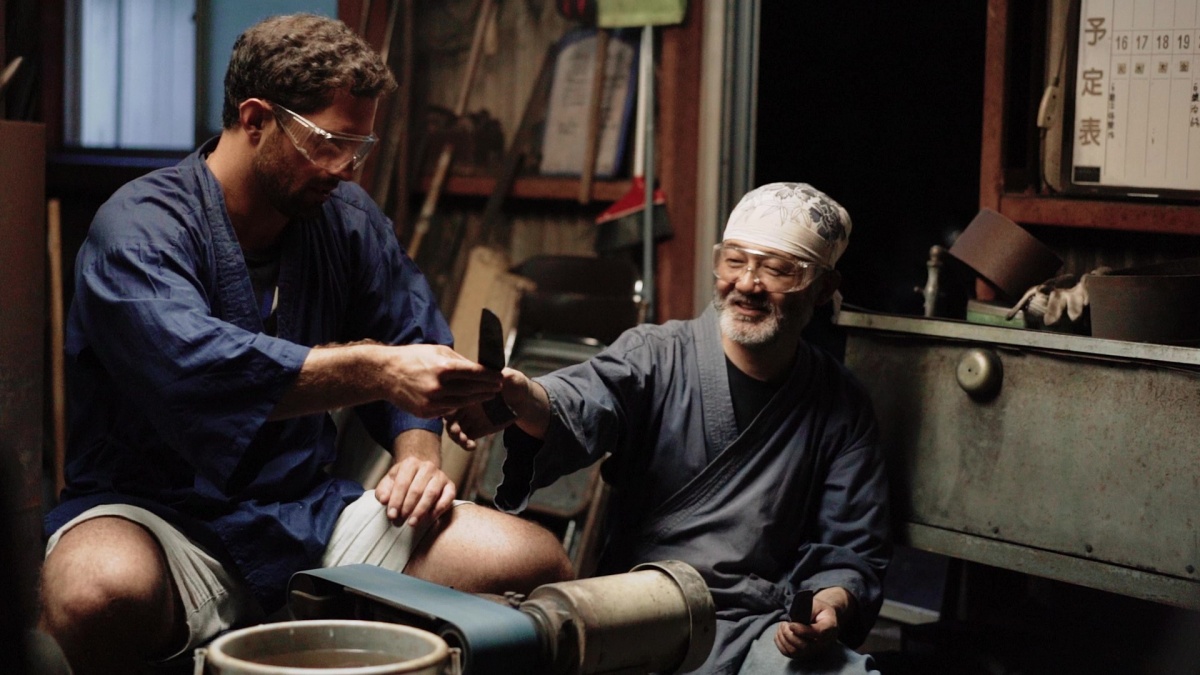
Kurogane Workshop
We mentioned activities, and Kochi certainly delivers. Tucked away deep in the mountainous countryside, near the Shimanto River (more on that in a moment) is the Kurogane Workshop, where visitors can try their hand at traditional Japanese knifemaking! The smith, Nobuya Hayashi, speaks English, and will walk you through the entire process—choose the style of knife you like, and get ready to work red-hot iron into a one-of-a-kind souvenir you can take home and enjoy for the rest of your life! If you're just visiting, don't worry; Hayashi Sensei can ship your knife to your home overseas.
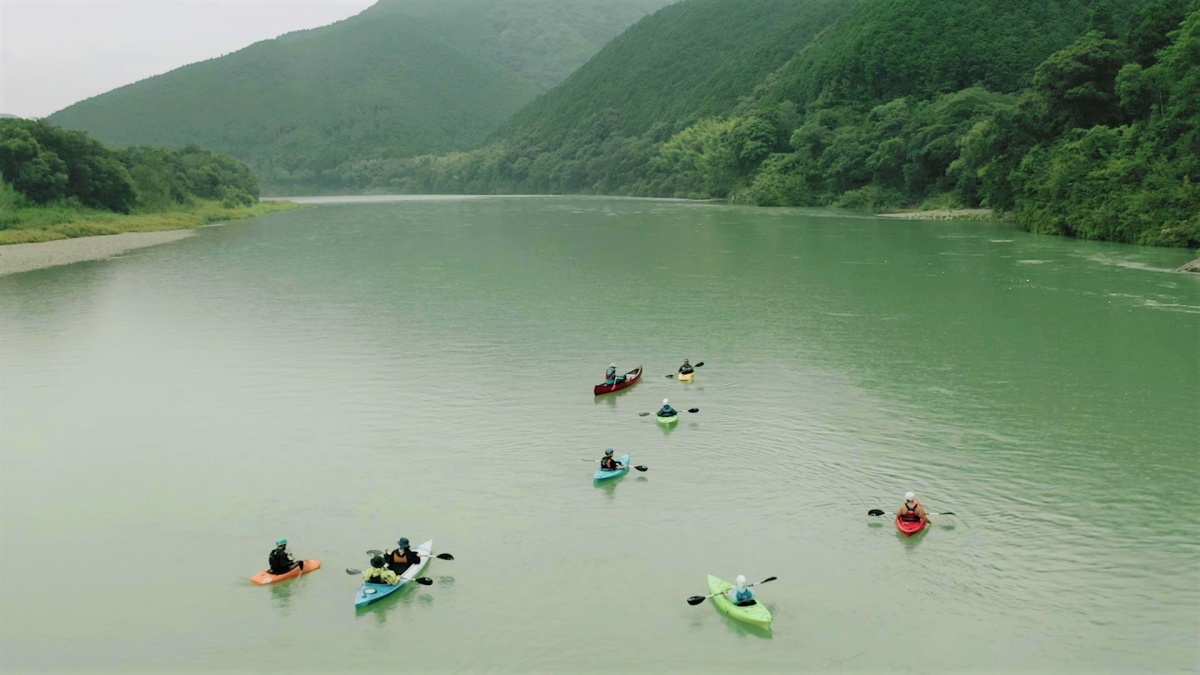
Kayak Down the Shimanto River
Known locally as the "last crystal-clear river in Japan," the Shimanto River is the picturesque lifeblood of the region. Some 196 kilometers in length, the river has played an essential part in the lives of Kochi's residents, not the least by providing bountiful freshwater catch like eel, freshwater prawns and more. In addition to its beauty, the Shimanto River is unique for its chinkabashi, bridges free of rails that were designed to be submerged when the river swells, and allow debris to flow uninterrupted.
The river offers tons of outdoor activities; leisurely pleasure cruises, riverside camping and barbecues, cycling and more. One highlight is canoeing or kayaking down the river; the scenery is second to none, and depending on the state of the river, the route is alternately Zen-like and exhilarating. There are plenty of different river routes, but the program and facilities offered by Kawarakko are great for beginners.
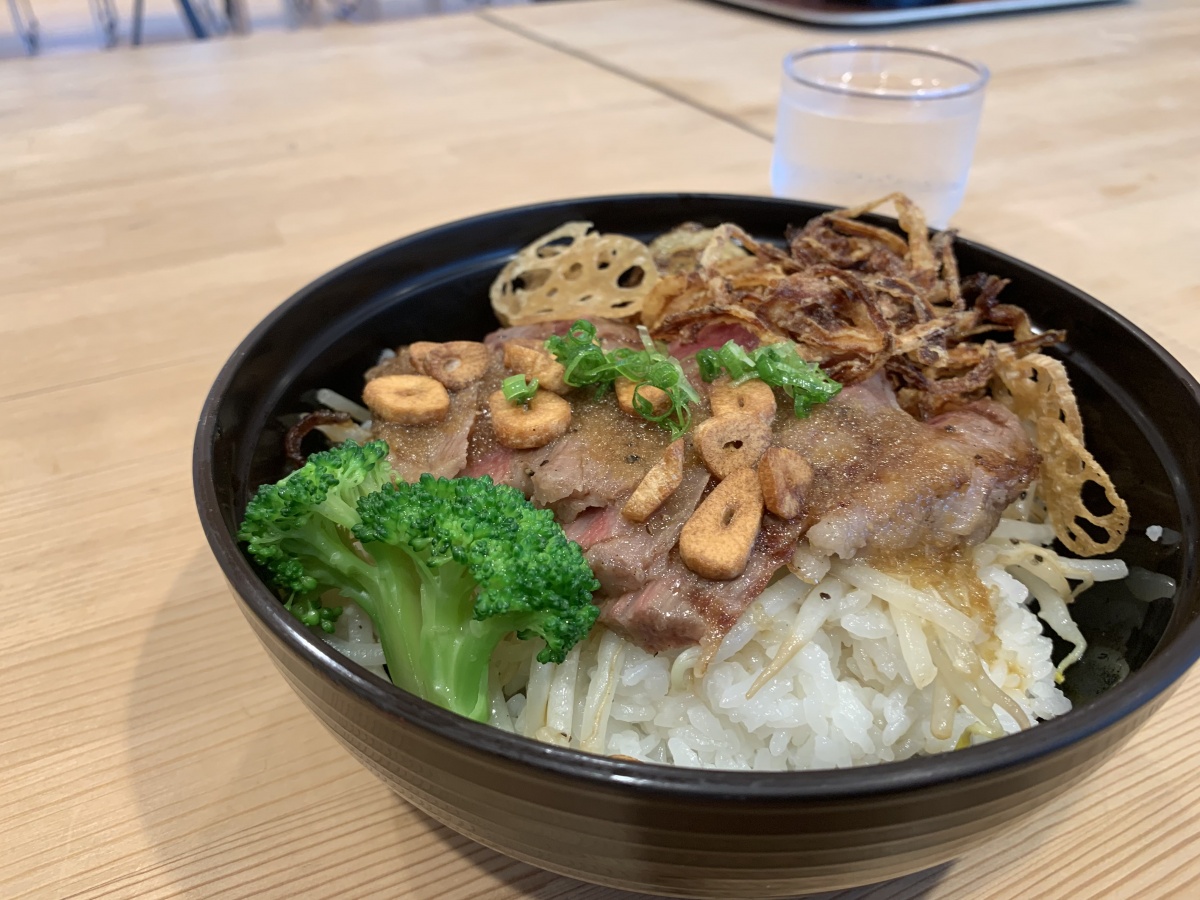
Yotte Nishi Tosa Michi-no-Eki
A michi-no-eki is literally just a highway rest stop, but the Yotte Nishi Tosa Michi-no-Eki takes the concept to a whole 'nother level. Located in western Kochi near the border with Ehime Prefecture, this beautiful building contains a seasonal market—which sells locally sourced produce and regional goods, as well as souvenirs—and a diner that sells delicious home-cooked meals like the wagyu beef bowl pictured above! It's the perfect place to get a little R&R before exploring the rest of the island.
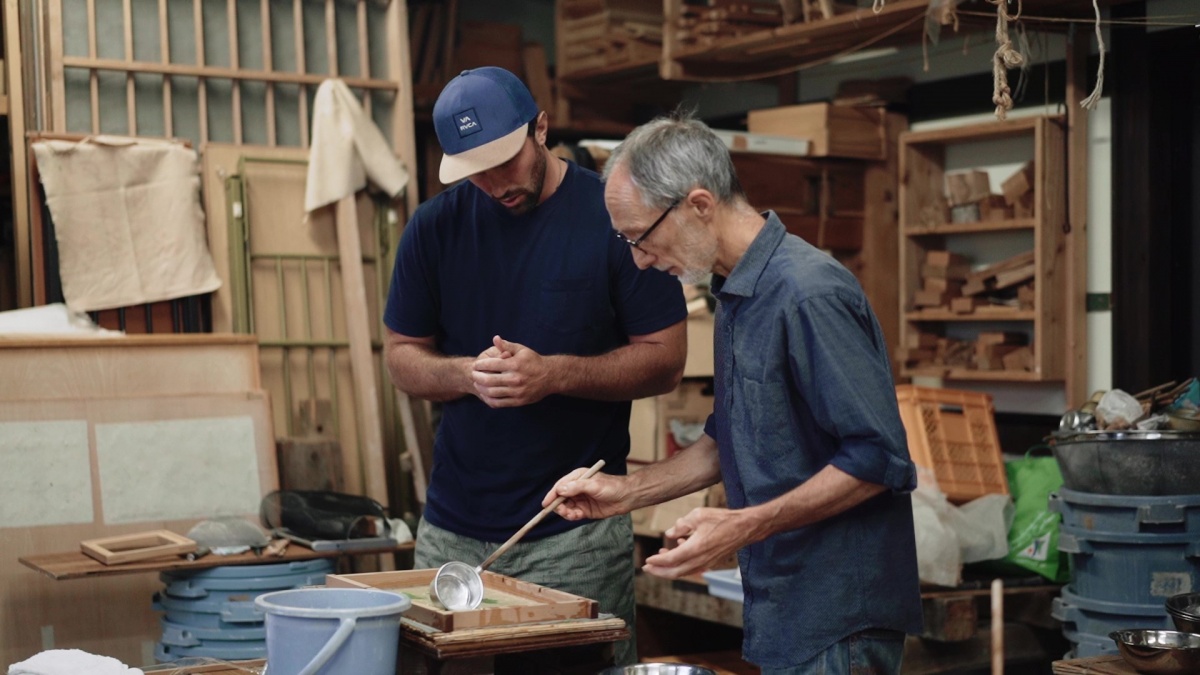
Make Traditional Paper at Kamikoya
Traditional Japanese paper, or washi, is very well-regarded for both its beauty and durability. Visitors can learn a little bit about the history of this time-honored craft and make their own paper at Kamikoya, a studio deep in the mountains of Kochi Prefecture. The studio is run by Rogier, a transplant to Japan who came to study Japanese papermaking, and has become a master of the craft! In addition to a workshop, Kamikoya also has a guesthouse, which is accented with beautiful washi created by Rogier himself.
Explore Buildings Designed by a World-Famous Architect
The quaint, forest-covered town of Yusuhara has an incredible secret; it is home to several buildings designed by the world-renowned Japanese architect, Kengo Kuma (of Olympic Stadium fame). All of the buildings are made with Japanese cedar, the tree that makes up the majority of Yusuhara's surrounding forests, and demonstrate Kuma's signature philosophy of respecting their environment rather than dominating them. The highlight is the Kumo-no-Ue-no Library (literally the "Library Above the Clouds"), a gorgeous and quirky structure that contains an incredible collection of literature, and also a rock climbing wall!
Having a hard time visualizing all the exciting activities described above? Check out the next episode to see Gareth cut, hammer and eat his way through Kochi!
Ehime Prefecture
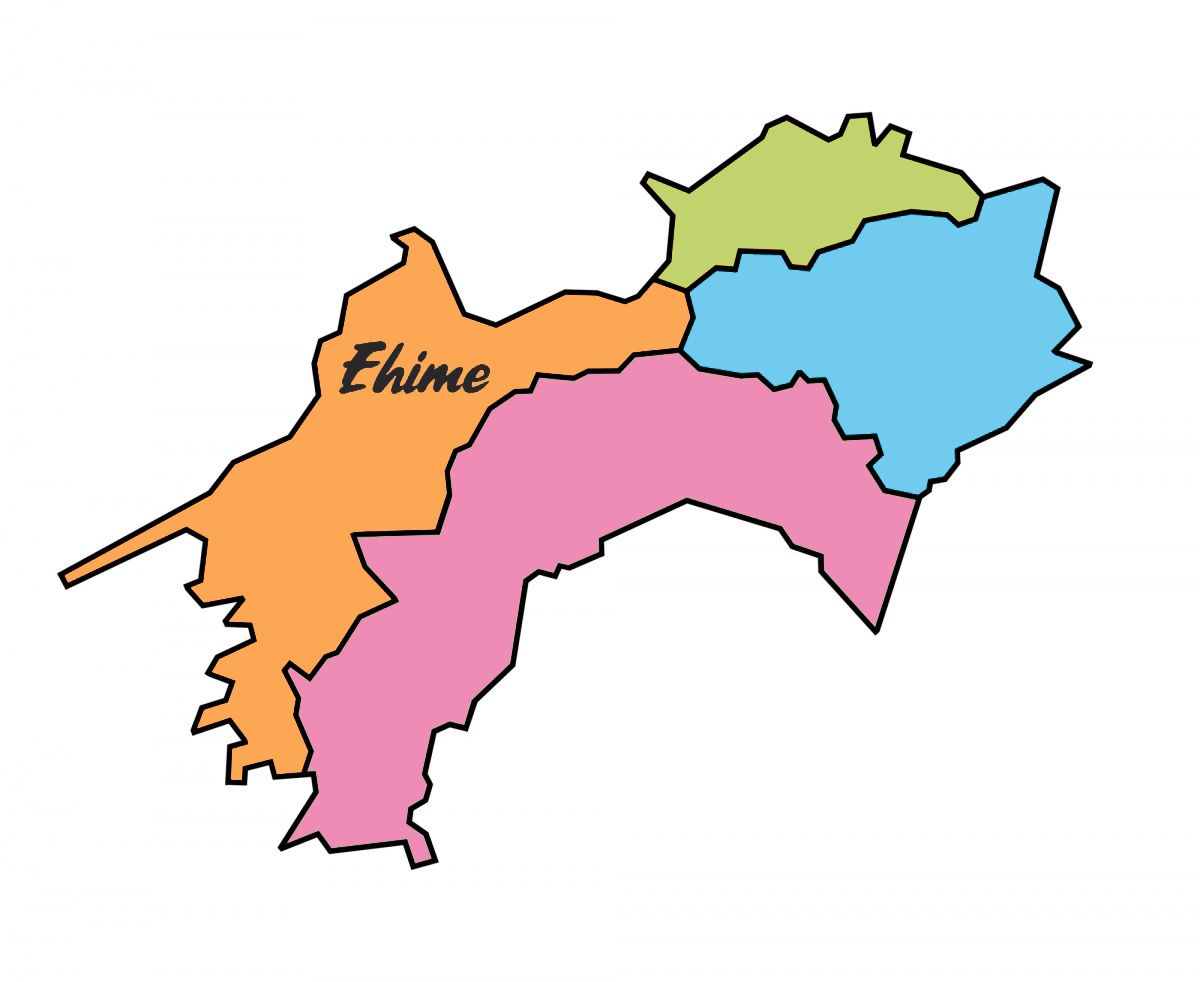
The final stop on our whirlwind tour of Shikoku is Ehime, the westernmost prefecture of Shikoku. This citrus-loving prefecture connects to Japan's main island via the bridges of the breathtaking Shimanami Kaido cycling route, and is home to Dogo Onsen, the oldest hot spring in Japan!
What to Do
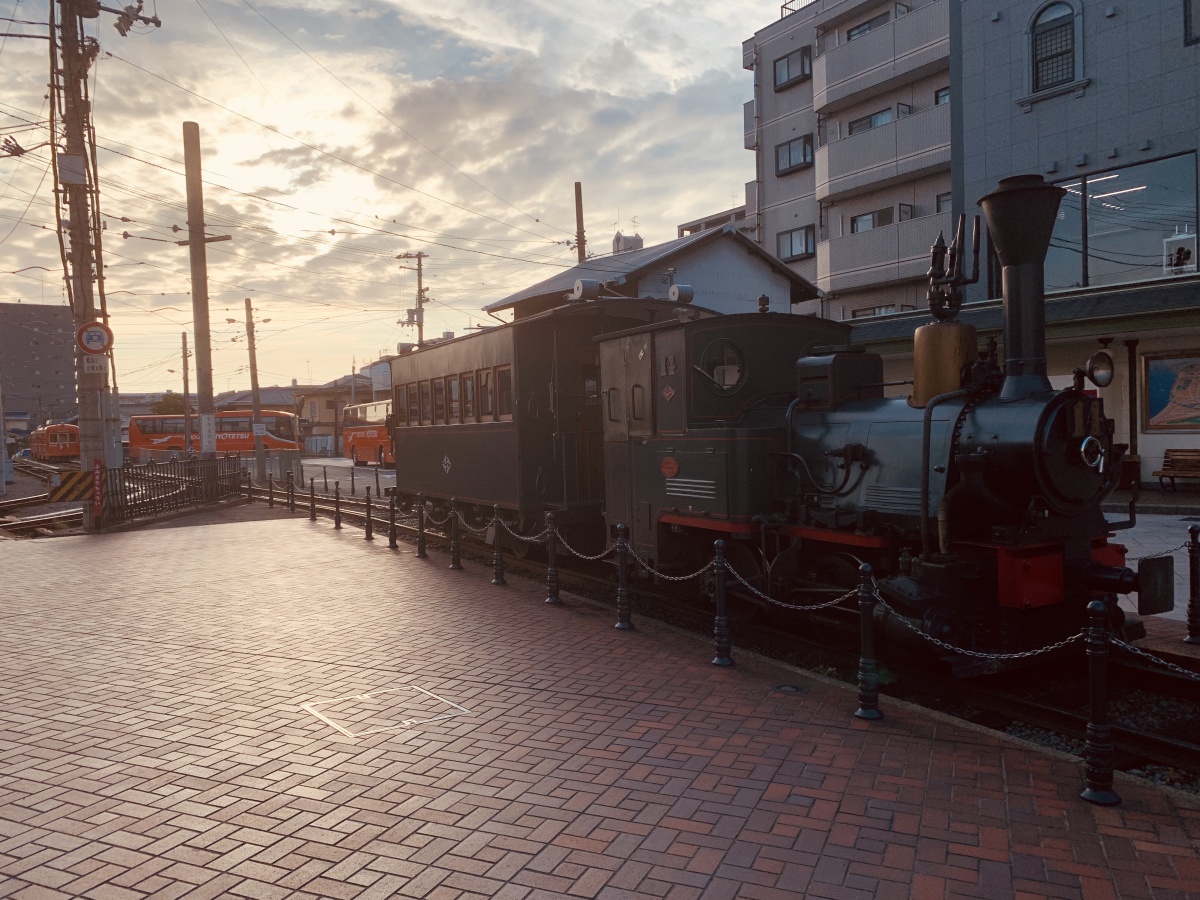
Matsuyama is the capital city of Ehime Prefecture, and is actually the largest of Shikoku's four capitals. There is no shortage of exciting tourist opportunities throughout the prefecture, but visitors could easily spend all their time in Matsuyama without breaking a sweat! Between the ancient and retro Dogo area, the expansive park surrounding Matsuyama Castle, which towers over the rest of the city, the quaint Botchan Locomotive (pictured above) based off of the novel by the Japanese author, Natsume Soseki, and all of the comforts one would expect from a modern metropolis, even ambitious travelers might have a hard time seeing it all!
Garyu Mountain Villa
But before we dive into Matsuyama, why not explore some of the rest of Ehime? Take, for instance, Garyu Sanso, a rustic mountain villa overlooking the Hijikawa River. While the villa may have traditional aesthetics (it was constructed in the style of teahouses typically found in Kyoto), it's actually rather modern—built in the early 1900s, it took about a decade to design and several years to build. The lush gardens surrounding the buildings are perfect for a quiet stroll, and the care that went into every design element is apparent upon first glance—though the complexity of each is only unveiled upon careful inspection. Three of its buildings have been designated nationally important cultural assets.
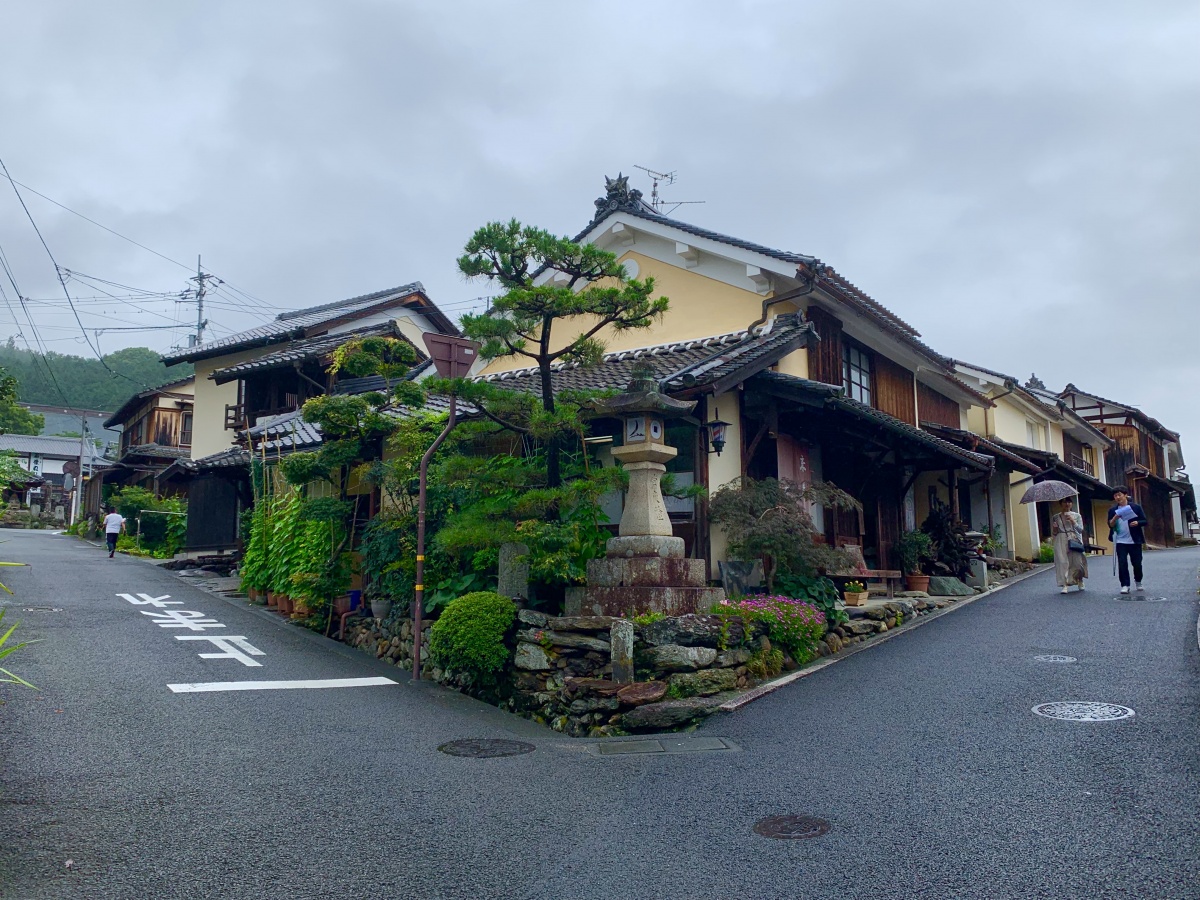
Historic Town of Uchiko
The town of Uchiko is a slice of Ehime that has managed to preserve the atmosphere of Japan during the Meiji Era (1868-1912), the time in which the town's wax industry boomed. As such, the architecture is typical of the era, and a walk through the Uchiko is like stepping back in time. The retro atmosphere is heightened by the presence of Uchiko-za, an old kabuki theater that was saved from demolition by residents, who loved the well-used venue and didn't want to see it destroyed. On days where there aren't performances visitors can explore the building, including the backstage areas, and learn how much work went into each production. Be sure to stop by one of the town's waxworks, and pick up some traditional Japanese candles!
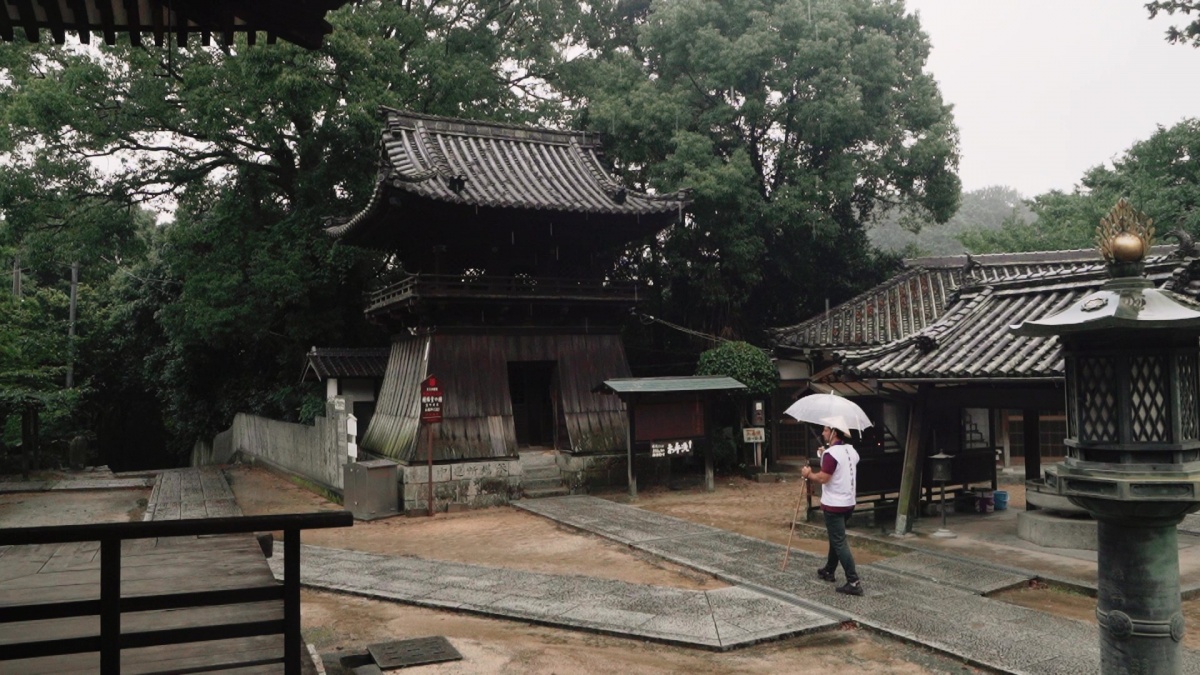
Taisanji Temple
Stop number 52 on the Henro, Taisanji Temple lies at the top of a cypress-and-bamboo-lined-hike up a small hillside slightly removed from Matsuyama. The temple was constructed in 1305, and legend has it that the main building of the temple was built in a single night. Within rests an 11-faced image of the Buddhist deity, Kannon, which has been designated a National Treasure. It's fairly close to the Dogo area of Matsuyama, so if your legs are sore after all of the stairs contained in the temple complex, you should stop by for a relaxing soak!
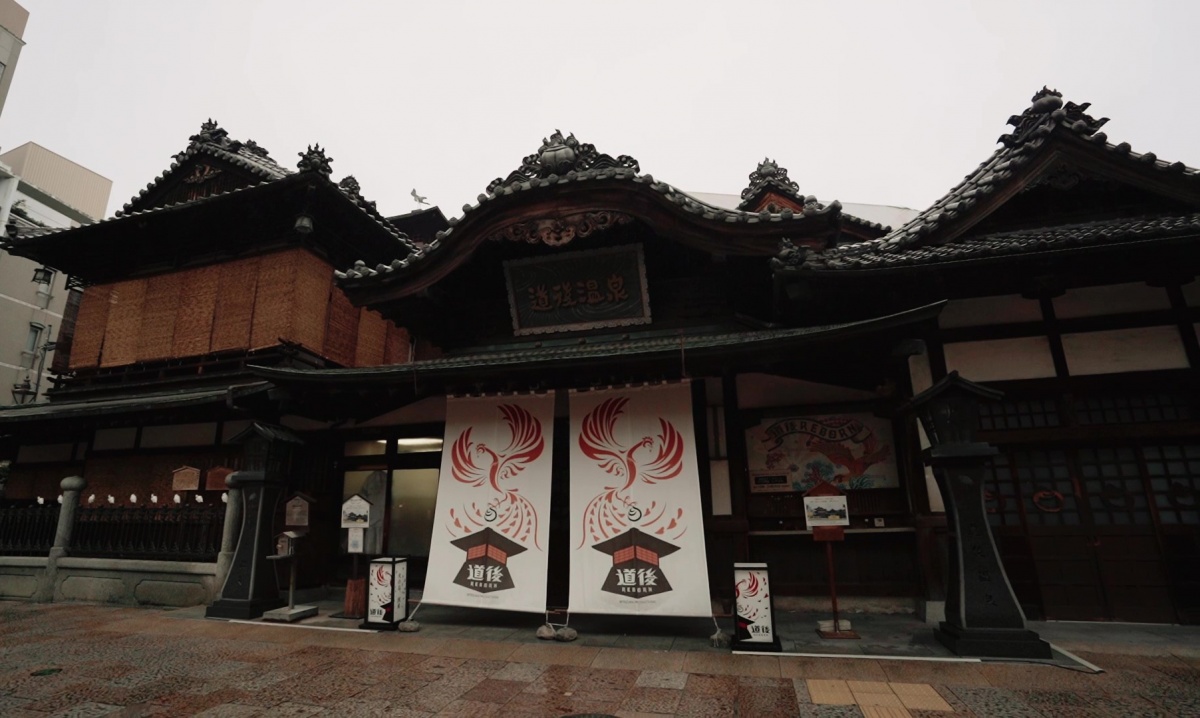
Dogo Area & Onsen
Said to be Japan's oldest extant hot spring, Dogo Onsen has over 3,000 (!!!) years of history behind it. The main building is a three-storey wooden structure that has been designated an Important Cultural Property. As of 2019, the main building is undergoing maintenance; fortunately, a lovely annex—Asuka-no-Yu—opened in 2017, so you can still soak in historical luxury! Afterward, why not put on a yukata (a cotton kimono) and stroll around the retro townscape? The covered mall has gift shops that are positively bursting; local sake, sweets and other items that are all excellent souvenirs of your time spent here!
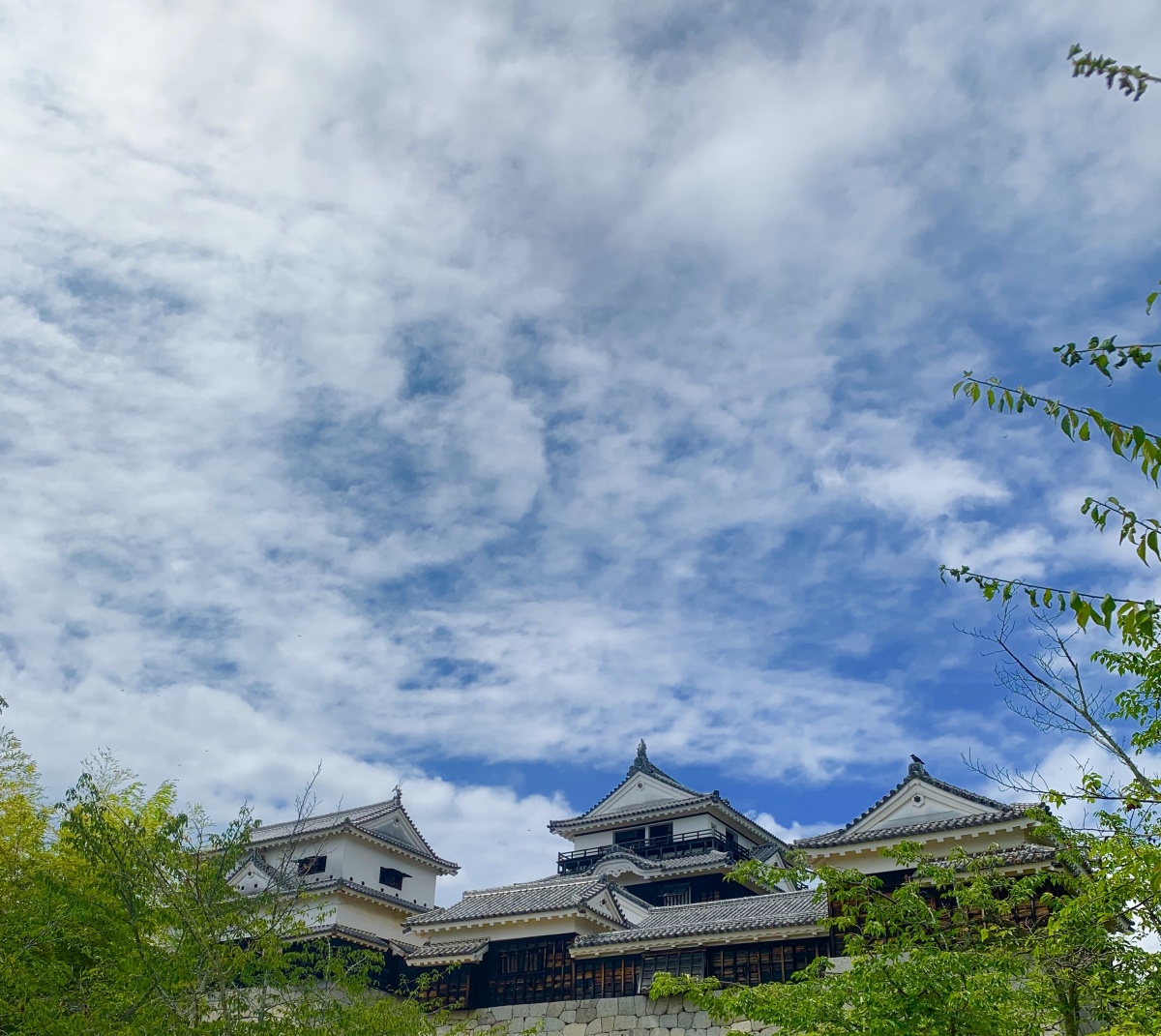
Matsuyama Castle
Resting proudly on a hilltop overlooking the entire city, Matsuyama Castle is one of Japan's few original surviving castles. An expansive park surrounds the castle, and while visitors are more than welcome to hike up the hill leading to the castle proper—perhaps the best way to truly understand the plight of would-be attackers attempting to assault the castle—a single-seat lift and a multi-person ropeway offer an easy, breezy way to get to the top.
The castle was originally constructed in 1603 with a five-storey keep; the current three-story keep was constructed between 1820-1854. Visitors can enter the grounds and get all the way to the top of the keep—the vantage from the top offers an unparalleled view of the city of Matsuyama, and the nearby sea.
Cycling the Shimanami Kaido
One of the most famous cycling routes in Japan, the Shimanami Kaido is a 60-kilometer-long series of roads and bridges that runs from Onomichi in Hiroshima to Imabari in Ehime. If cycling isn't your thing, the shot above was taken from the Mount Kiro Observatory, which overlooks the Seto Inland Sea and the Kurushima-Kaikyo Bridge. For those who want to work up a sweat while they soak in the scenery, considering renting a bicycle from the cycling terminal, Sunrise Itoyama! Pedestrian lanes line the bridge, and the refreshing seabreeze and incredible views are sure to keep even amateur cyclists invigorated!
https://www.youtube.com/watch?v=CS7flVEOo0c
With this final video, our week-long exploration of Shikoku came to a close. Want to follow in the footsteps of Gareth, and other pilgrims? Then you'll want to know how to get there!
How to Get There

https://shikoku-tourism.com/en/transport
Now that you've seen a little bit of what Shikoku has to offer, you probably want to know how to get there, and how to get around. Although the island isn't connected to Japan's extensive bullet train network, it is connected by the Great Seto Bridge (also called the Seto Ohashi), and visitors using the JR Pass can take the JR Seto-Ohashi Line from JR Kojima Station (in Okayama) to Takamatsu Station. Each prefecture also has an airport that services daily flights from other major cities around the country, as well as some international destinations. Depending on where you're traveling from, there are also regular highway buses (which are a great option if you're trying to save money), and even ferries! The easiest way to get around Shikoku once you're there is by car, but the major cities are all connected via trains and buses, as are many of the most popular sightseeing hotspots.
More Adventures in Shikoku
We've been lucky enough to take a deep dive into some of the awesome travel opportunities Shikoku offers, but there's still a LOT more to explore! Much like the Henro pilgrimage itself, there's no wrong way to enjoy Shikoku. If you're interested in truly authentic experiences that can only be had in areas that are almost impossibly beautiful, then this small island should be at the top of your travel list. So what are you waiting for?


